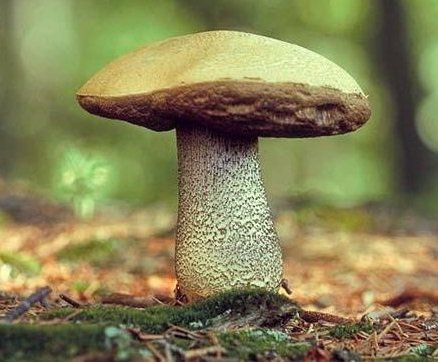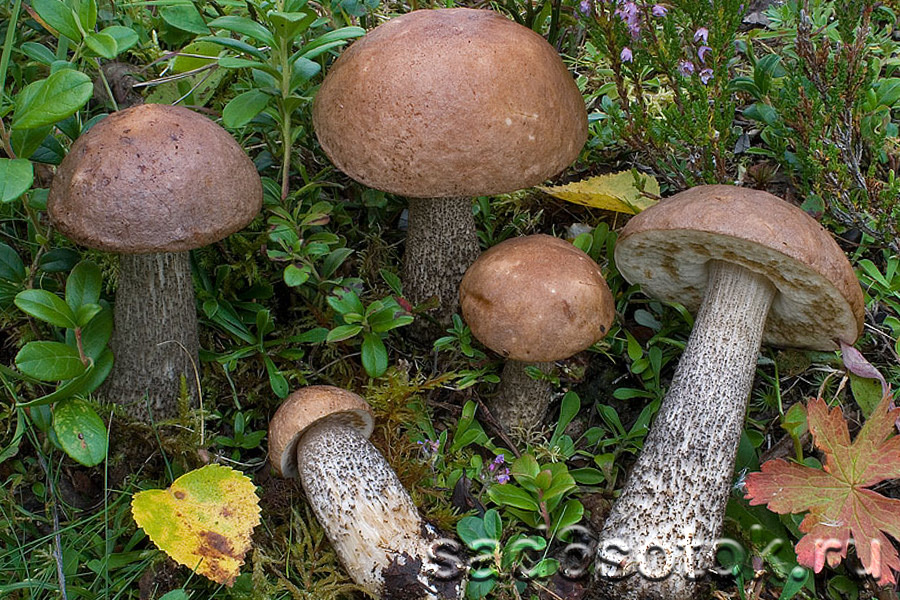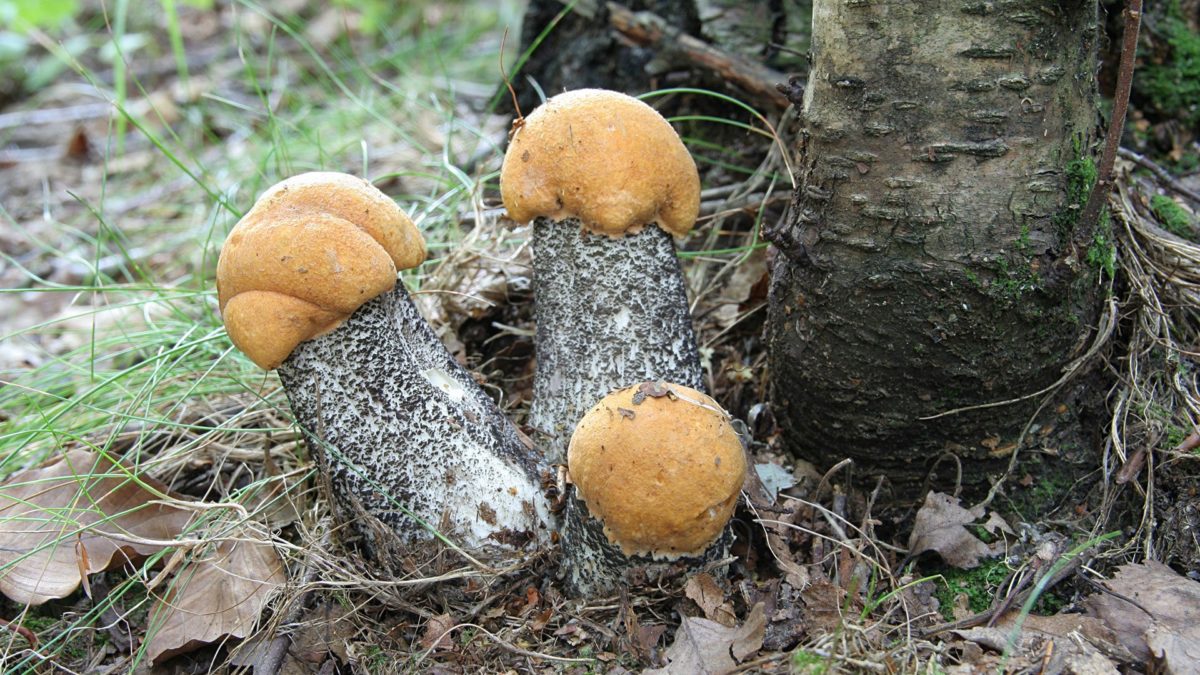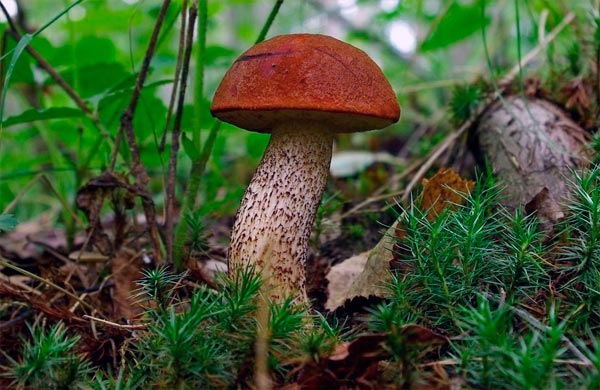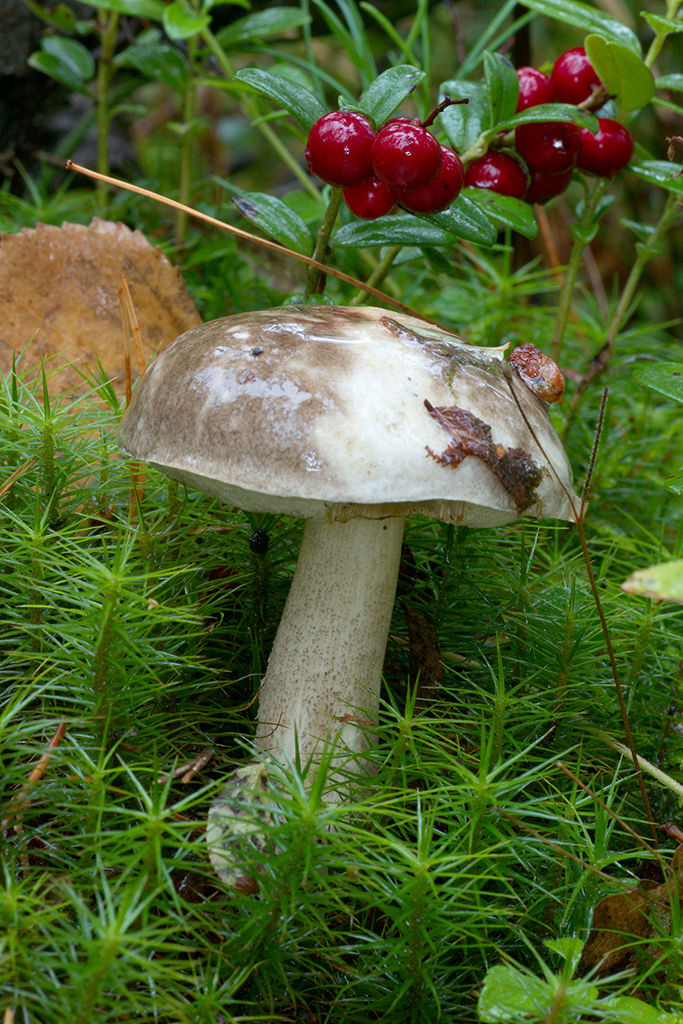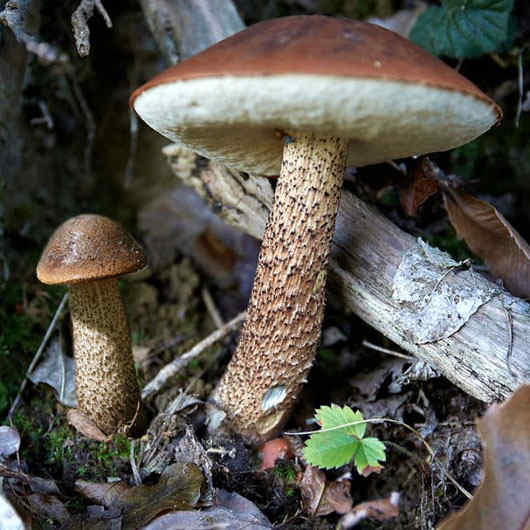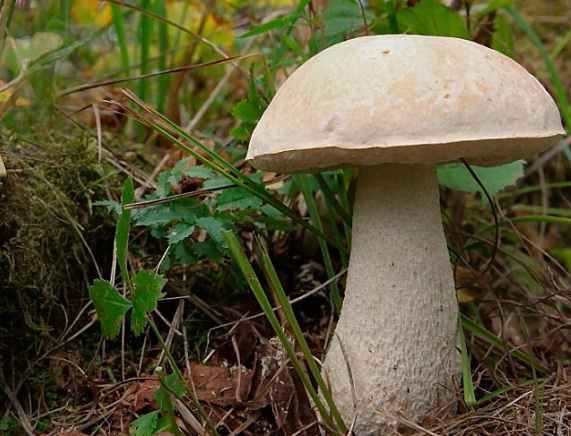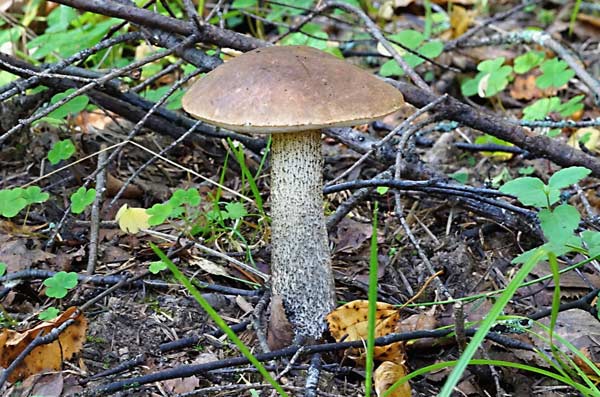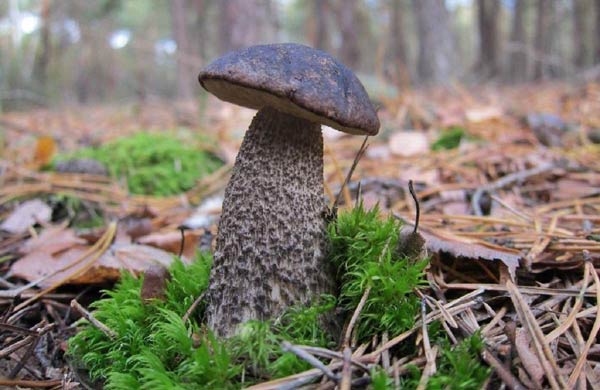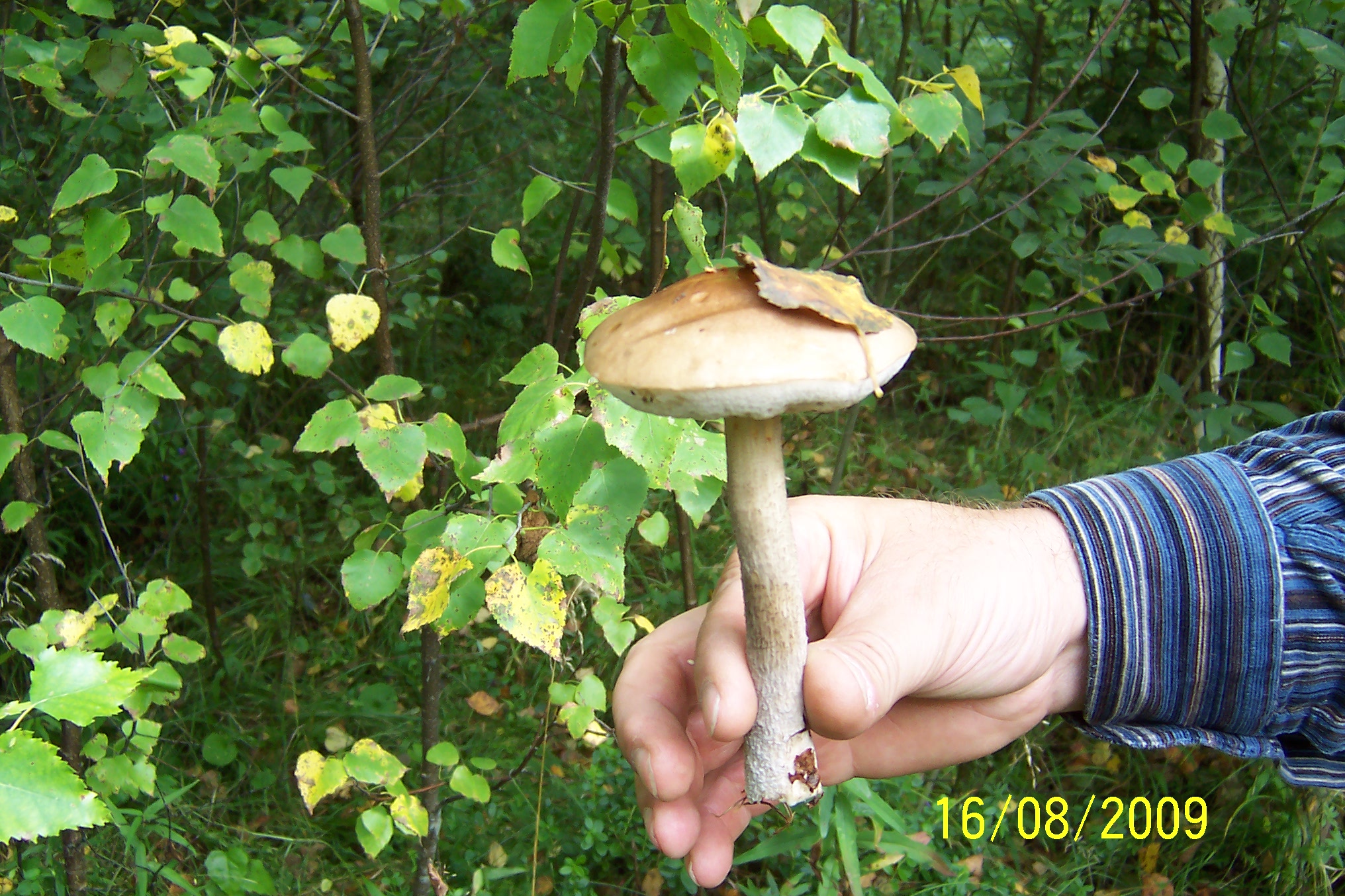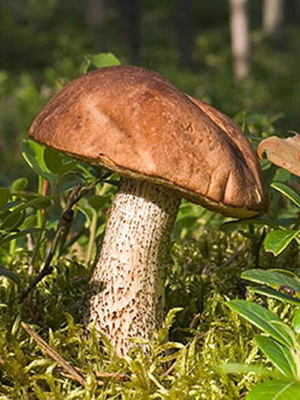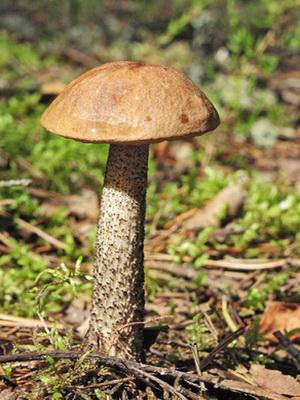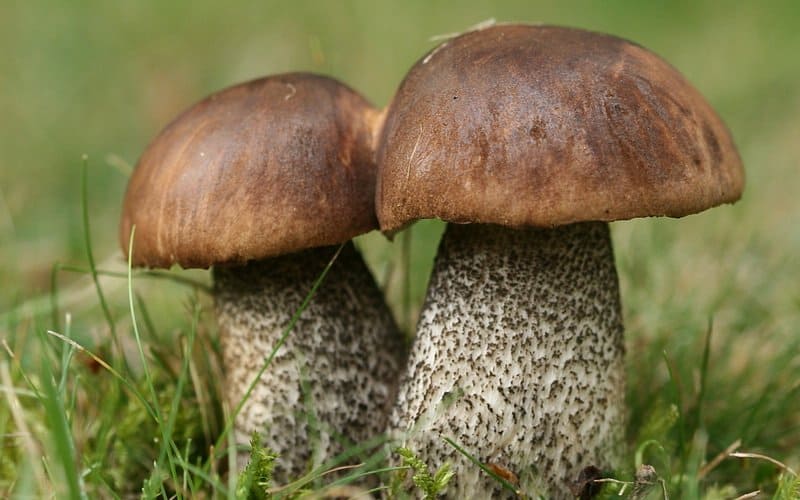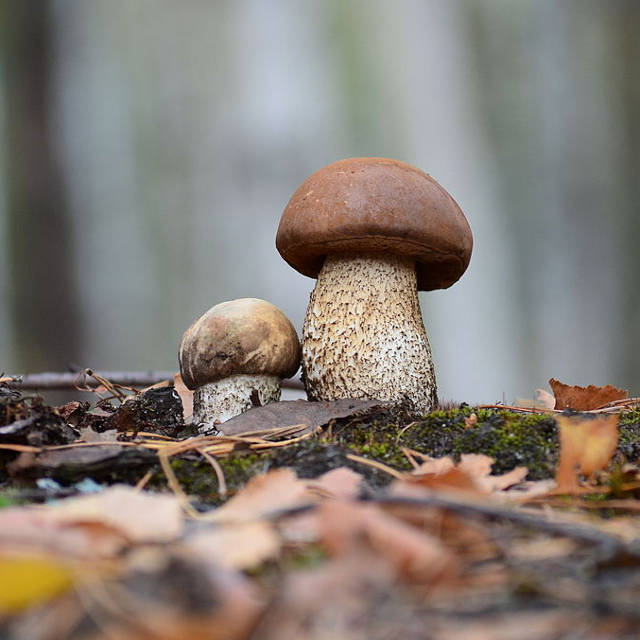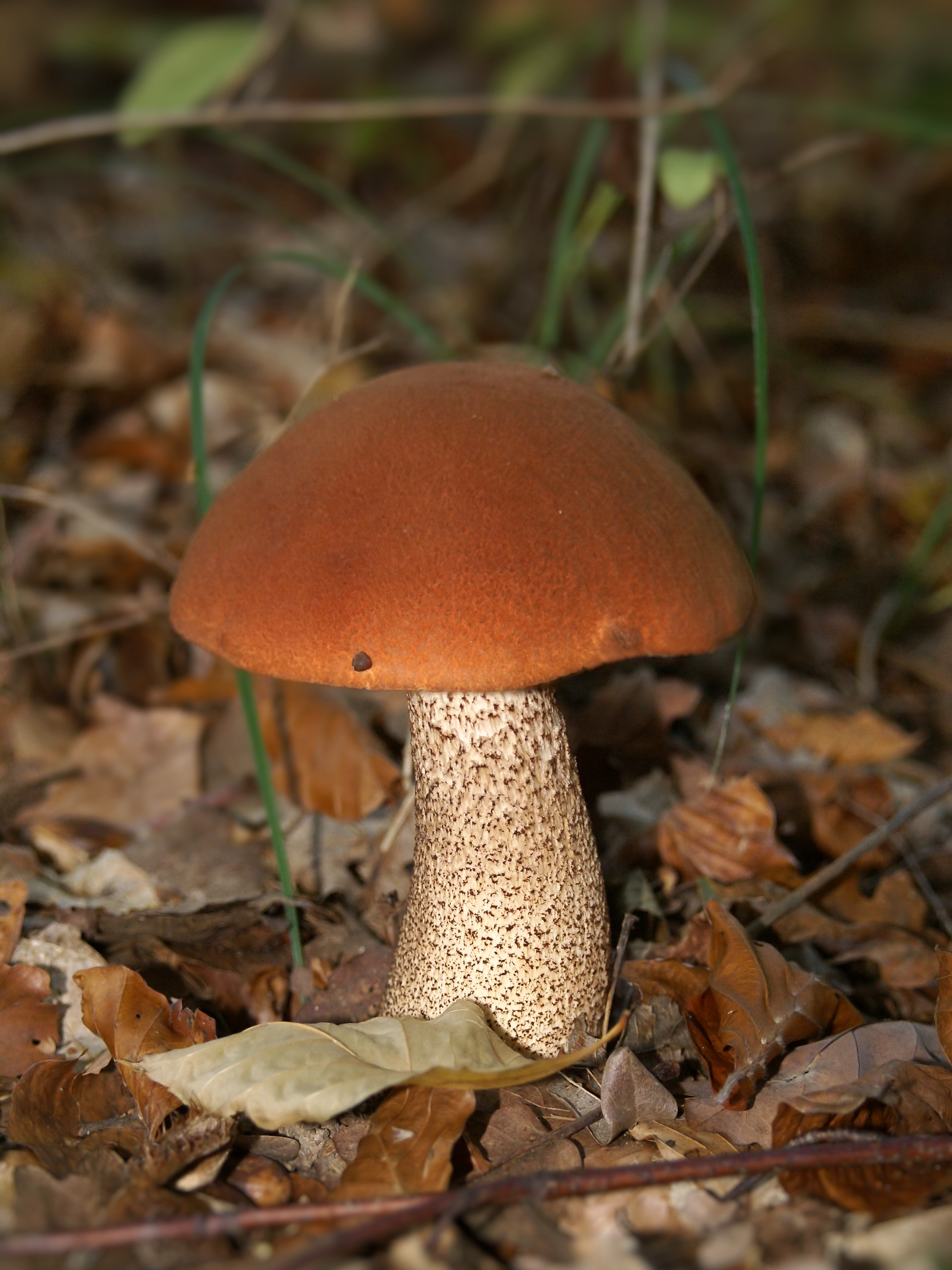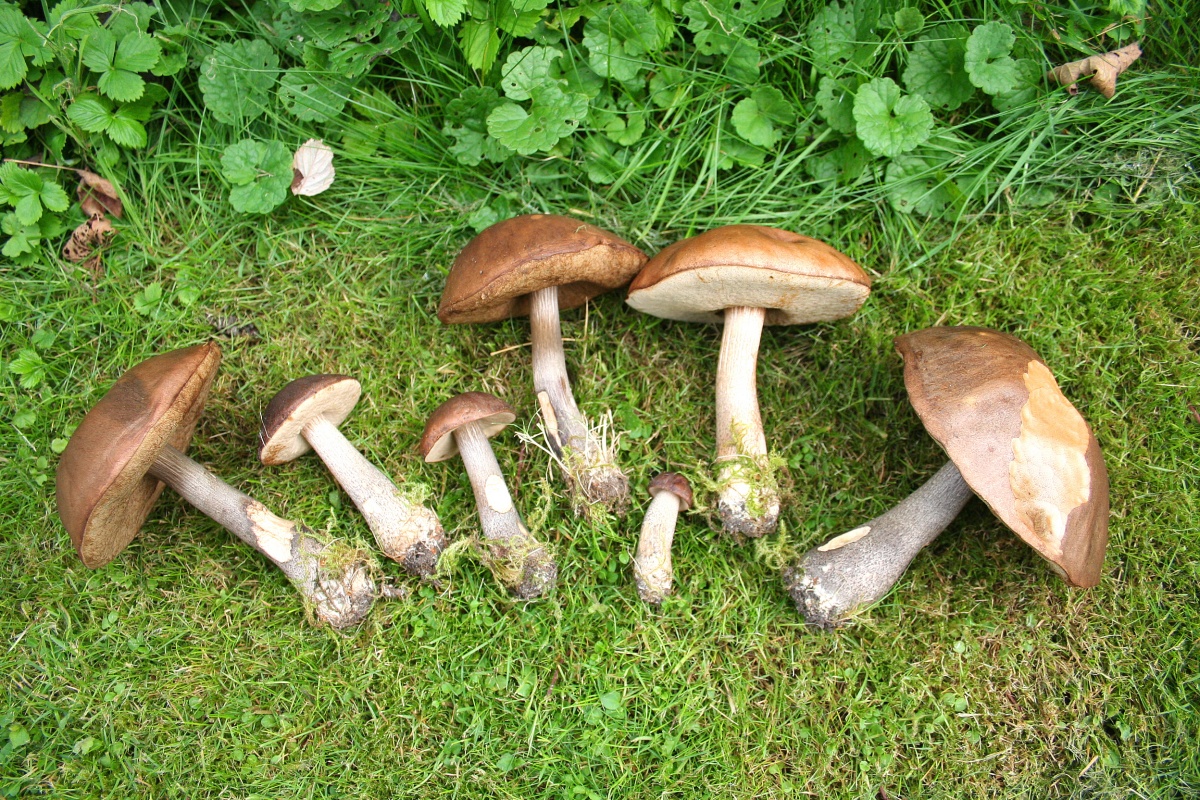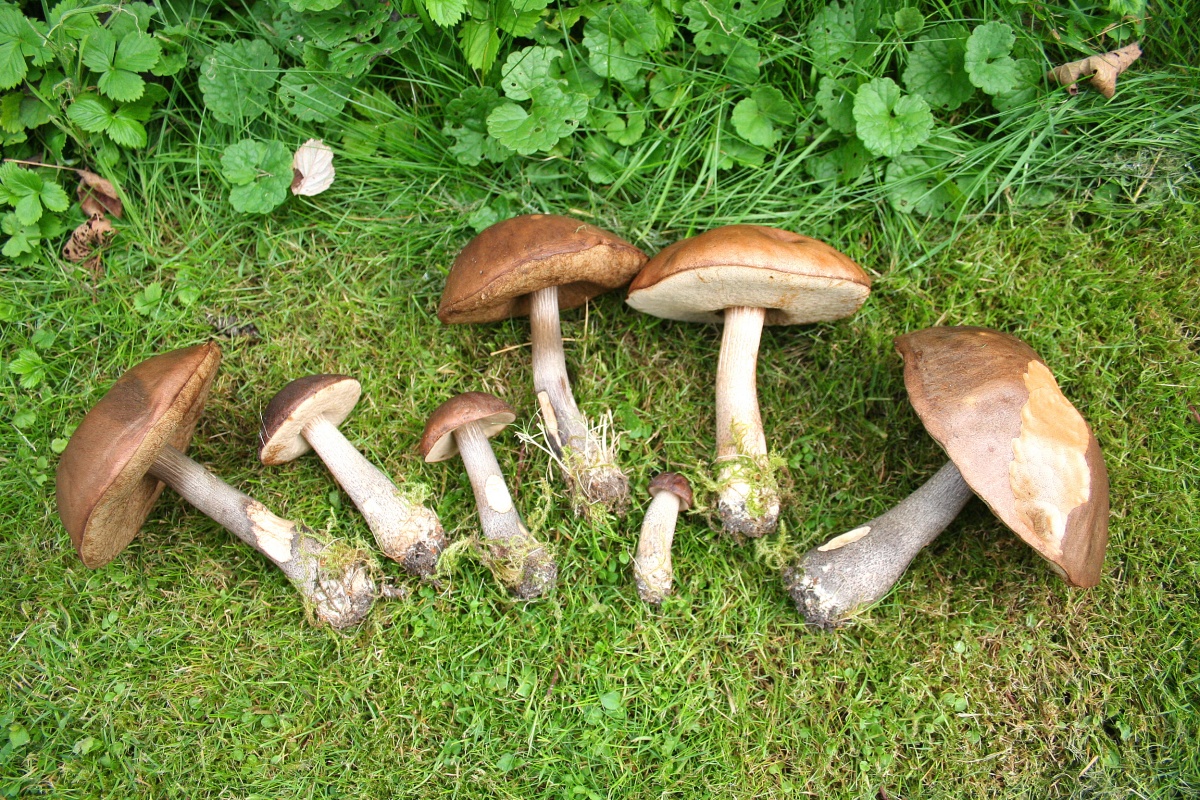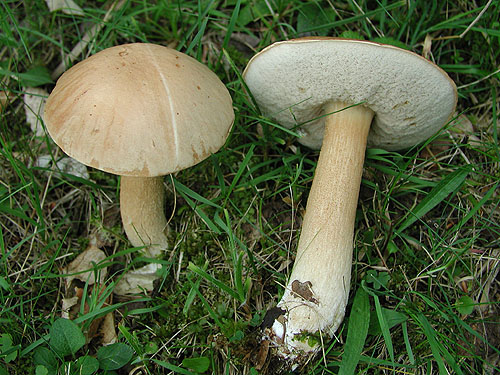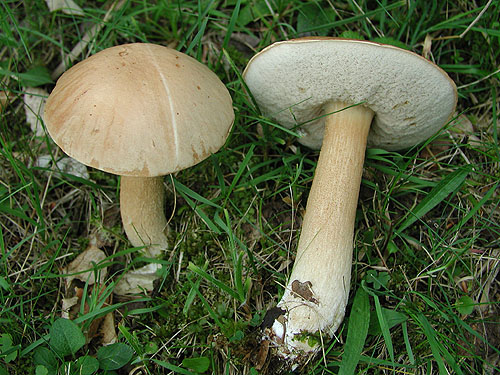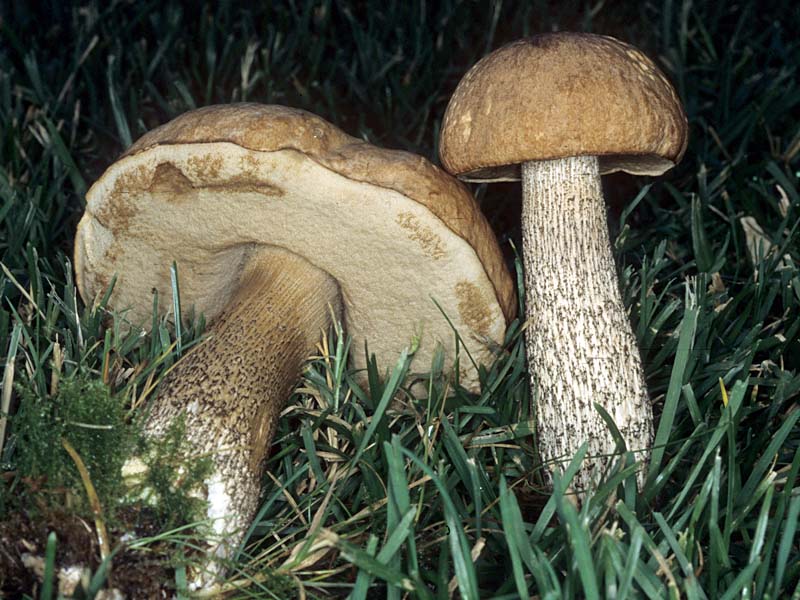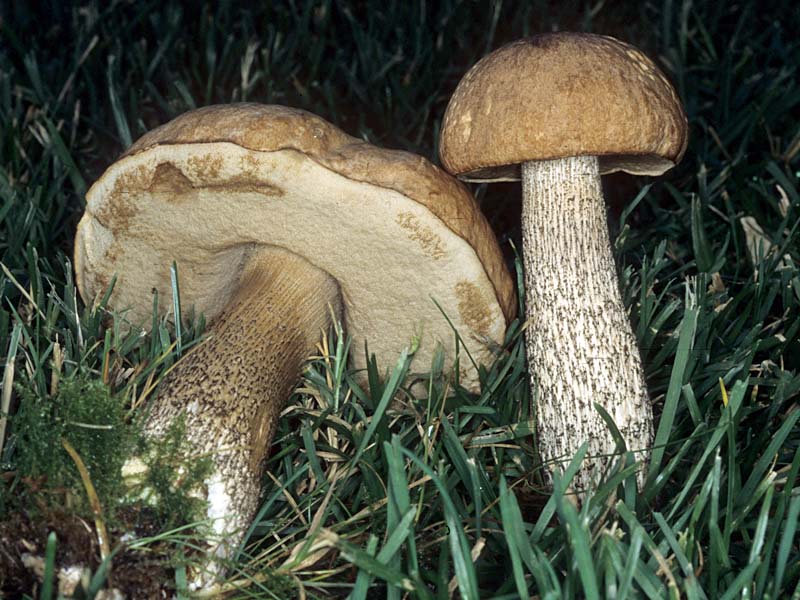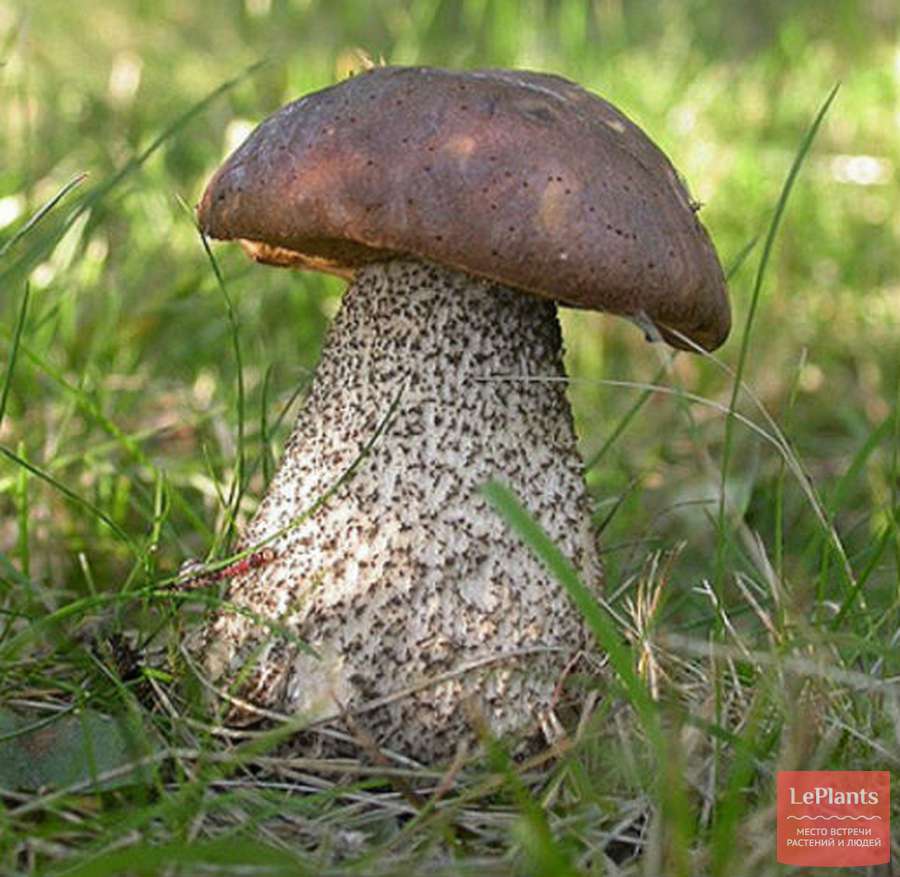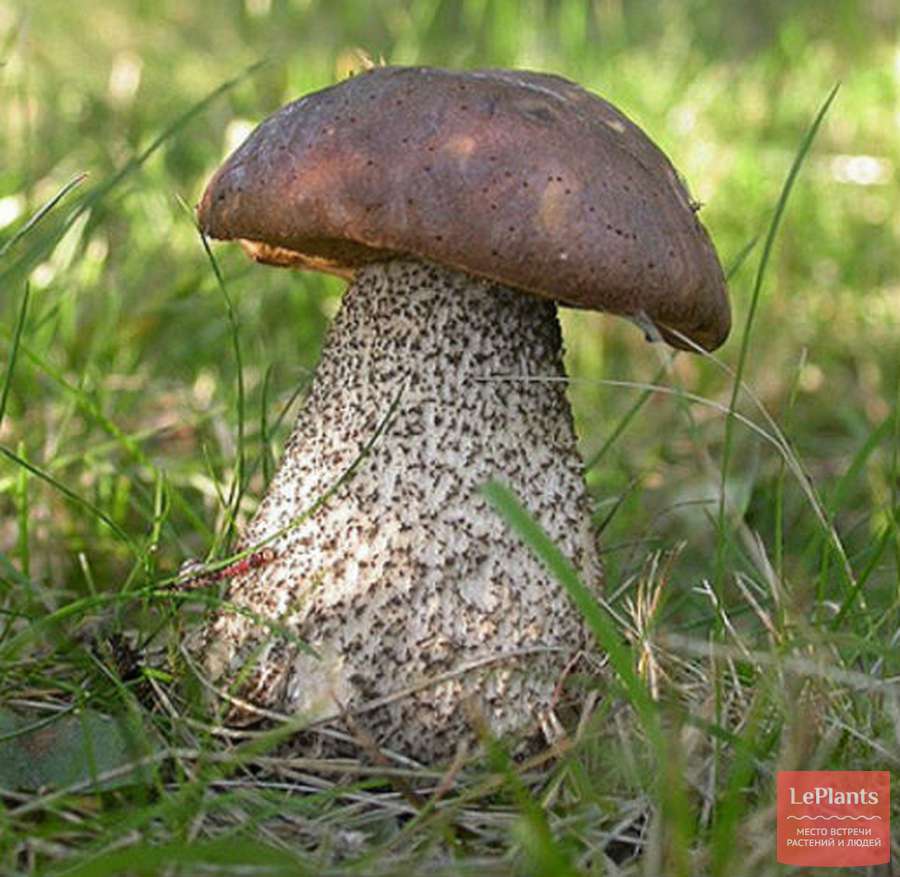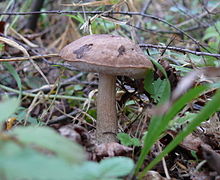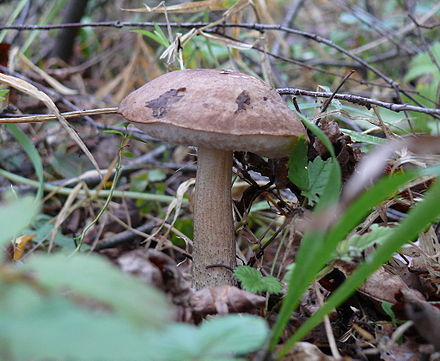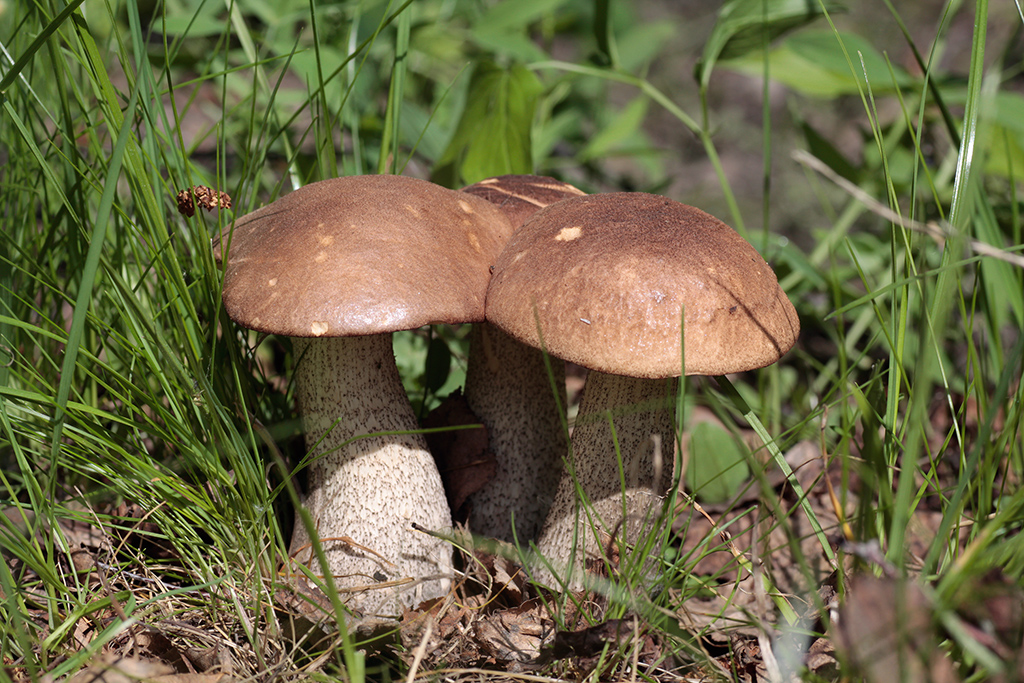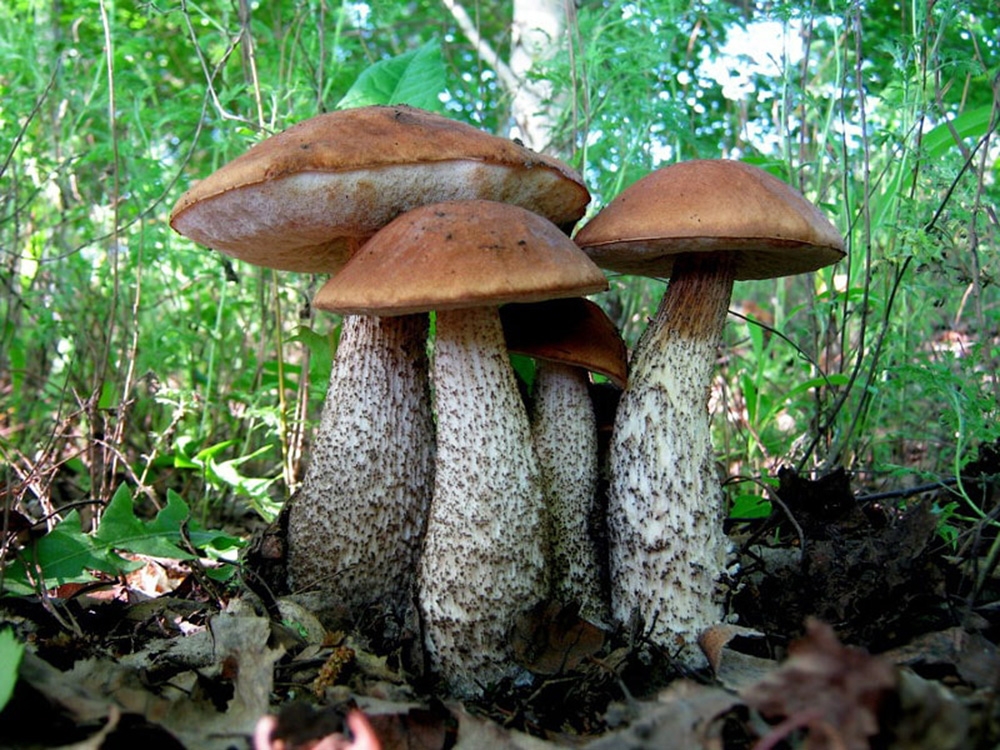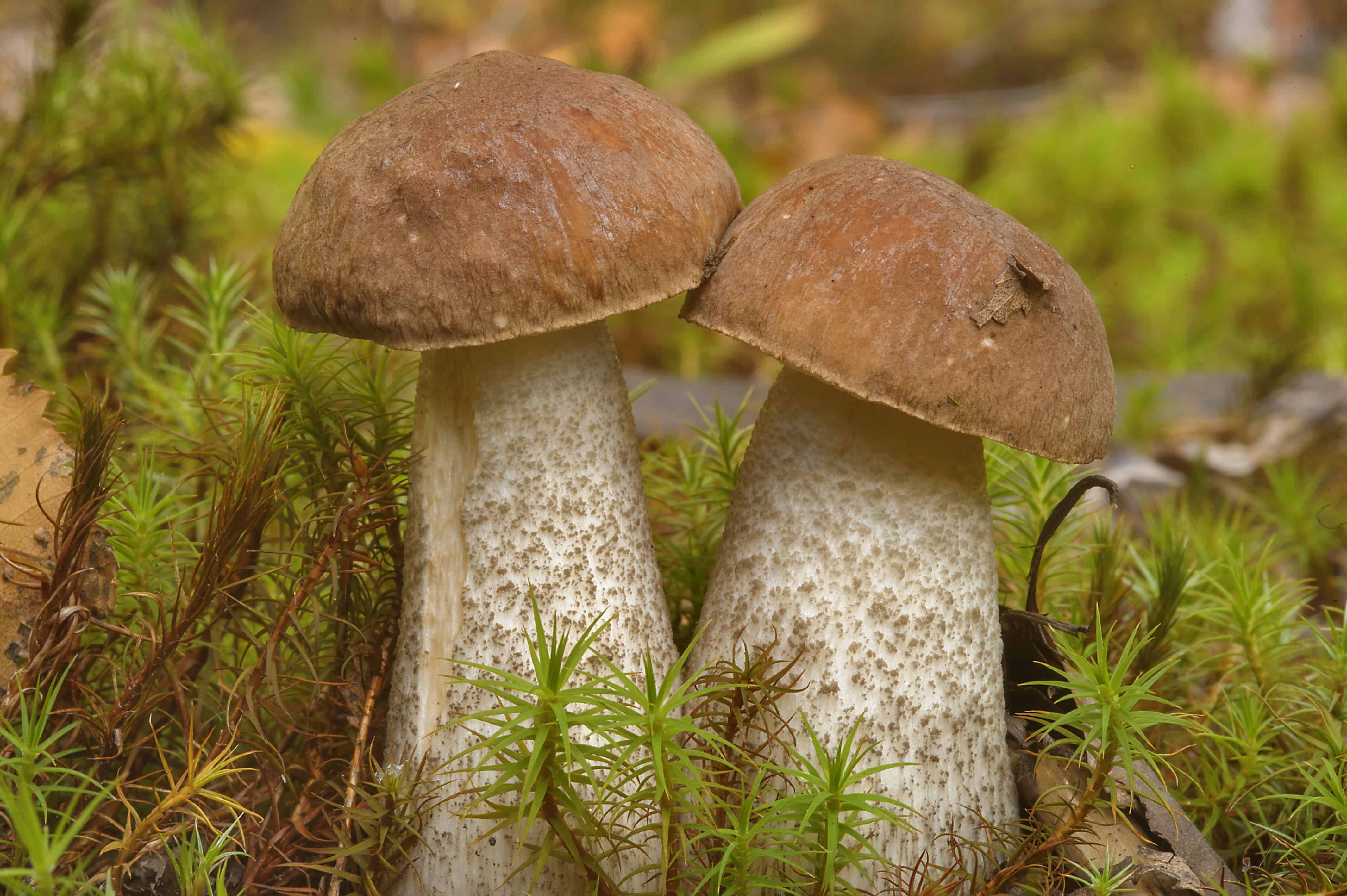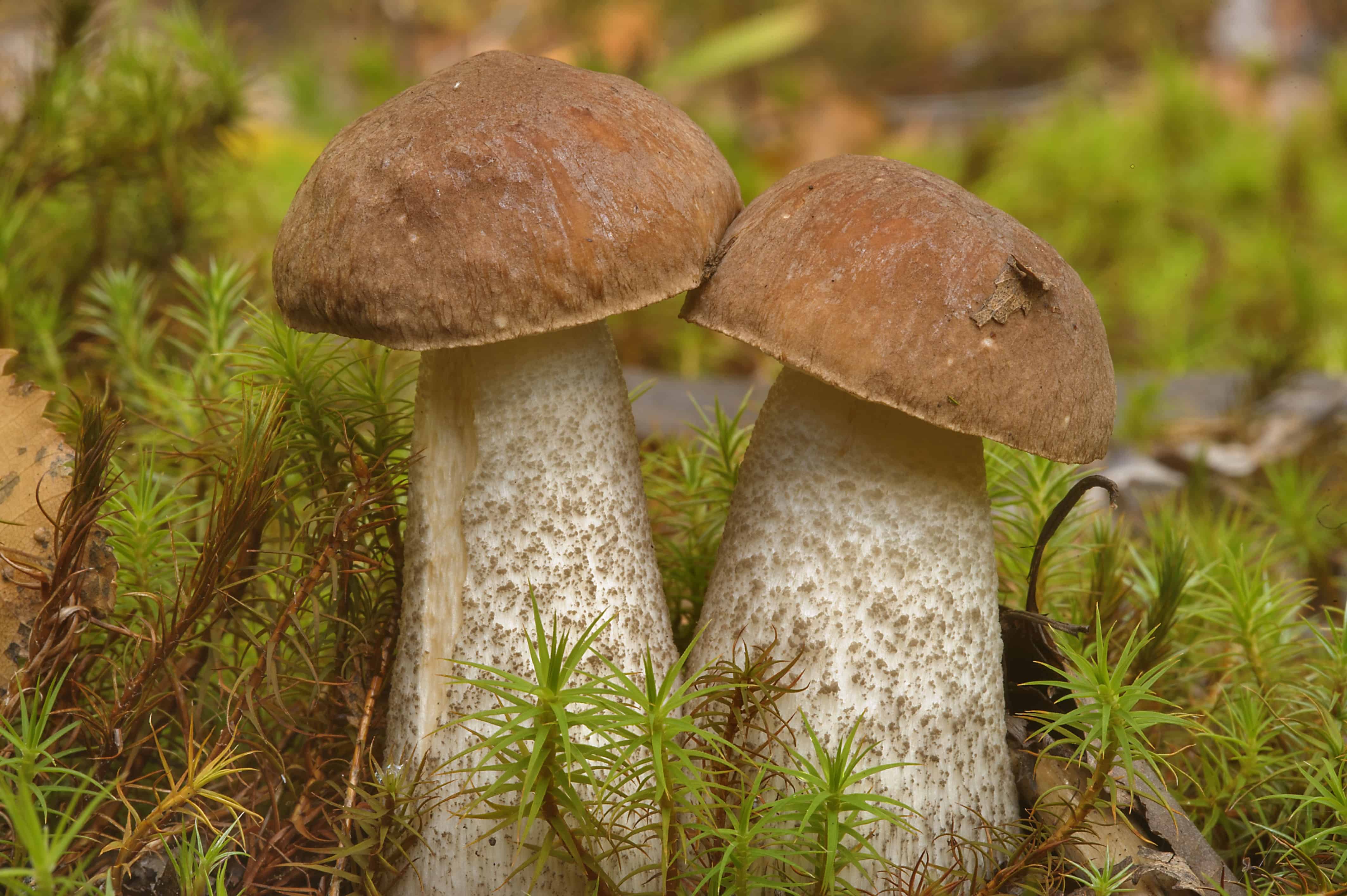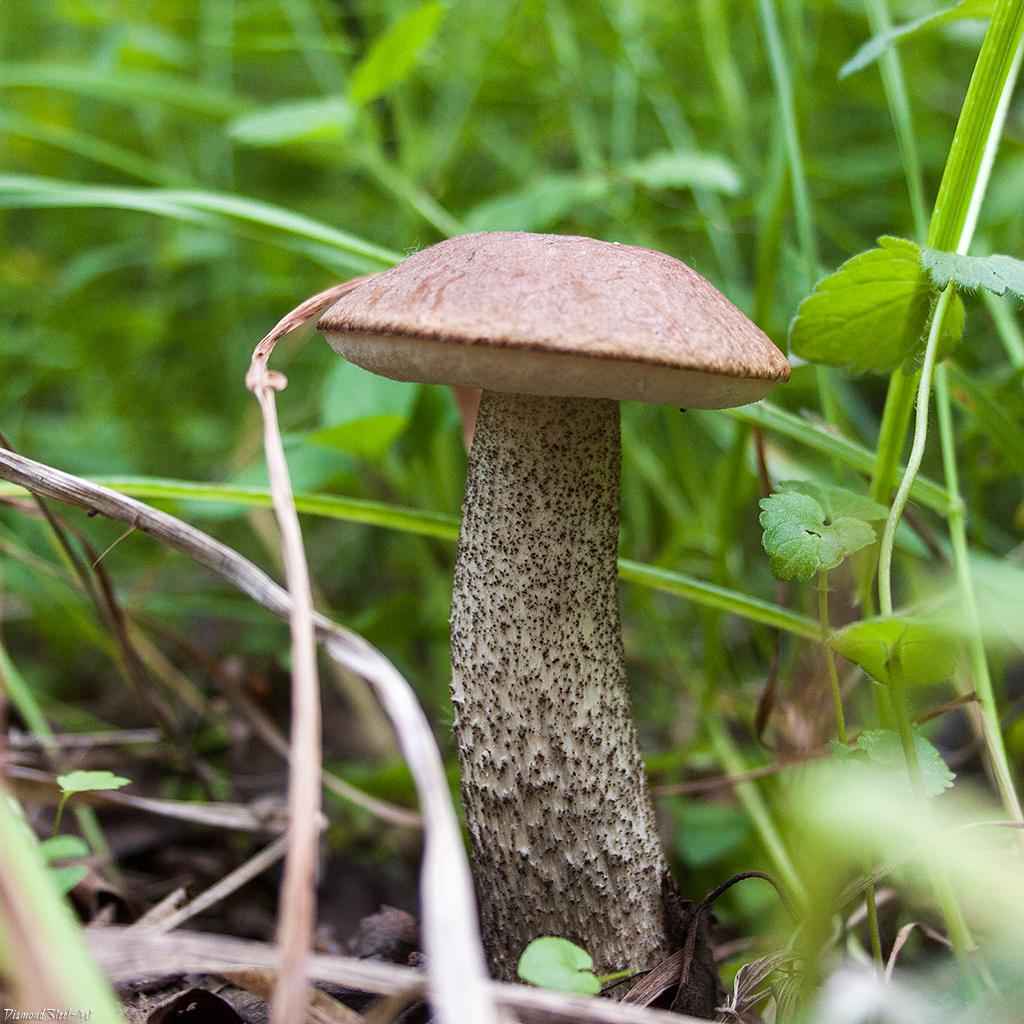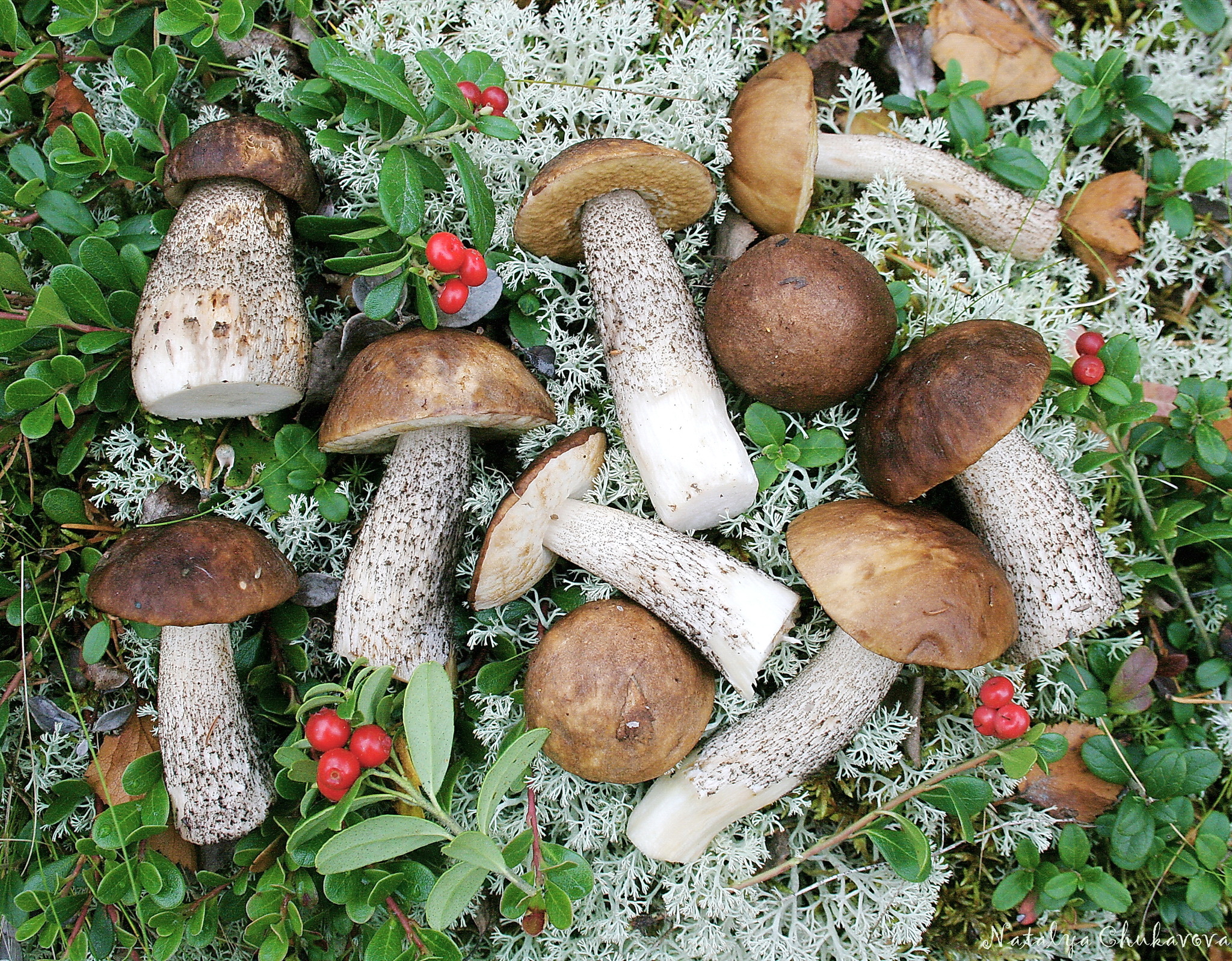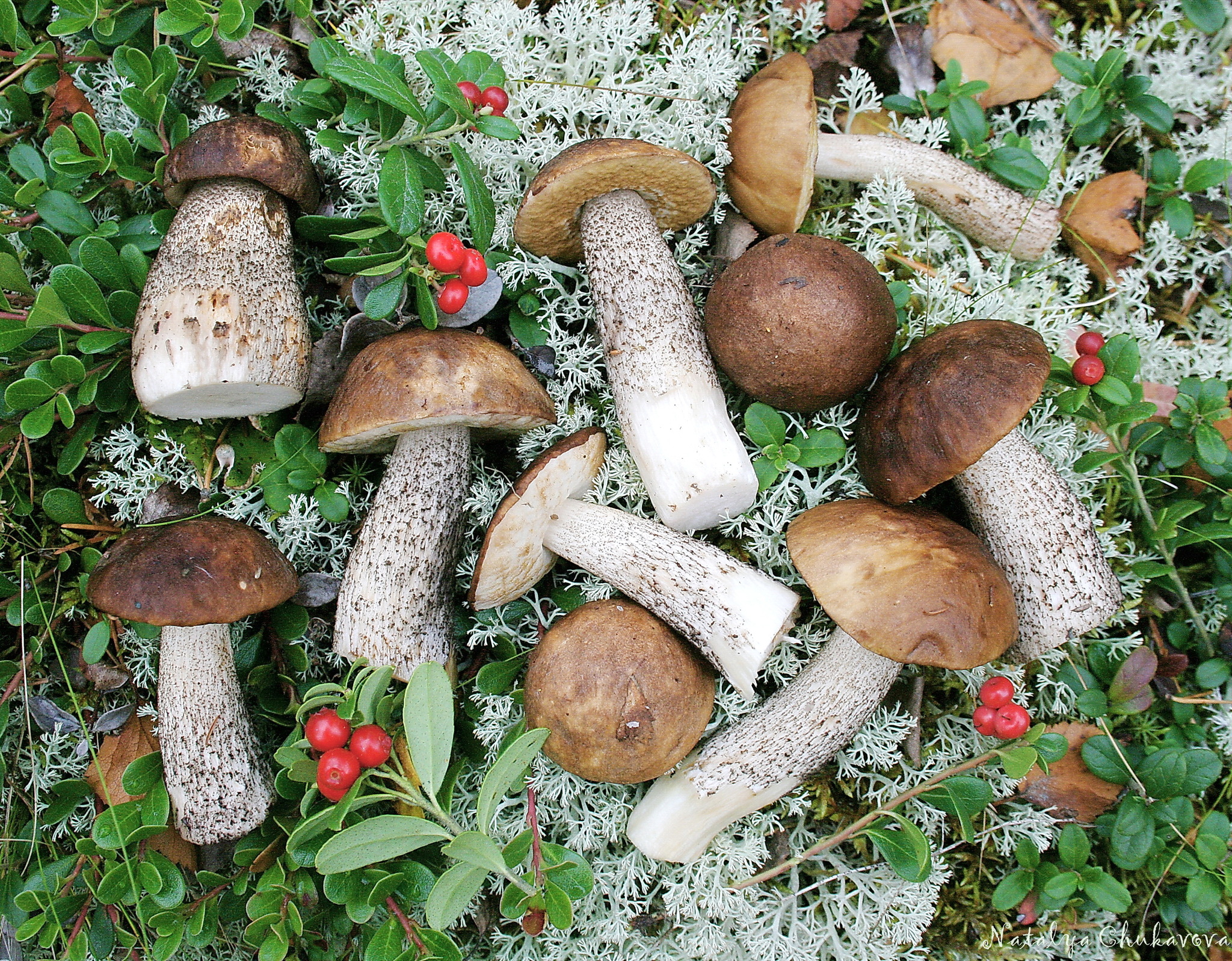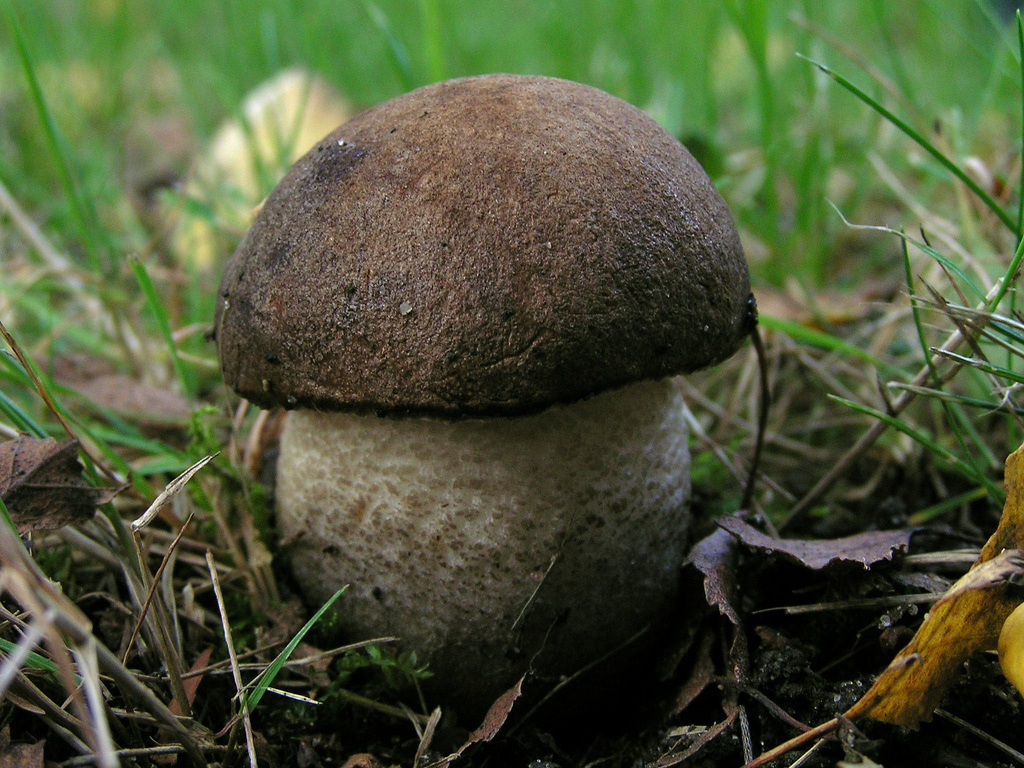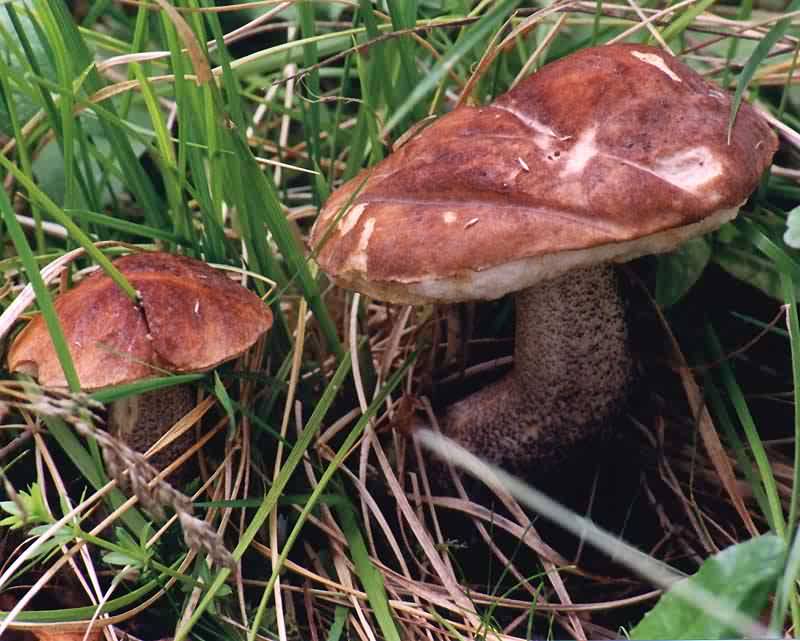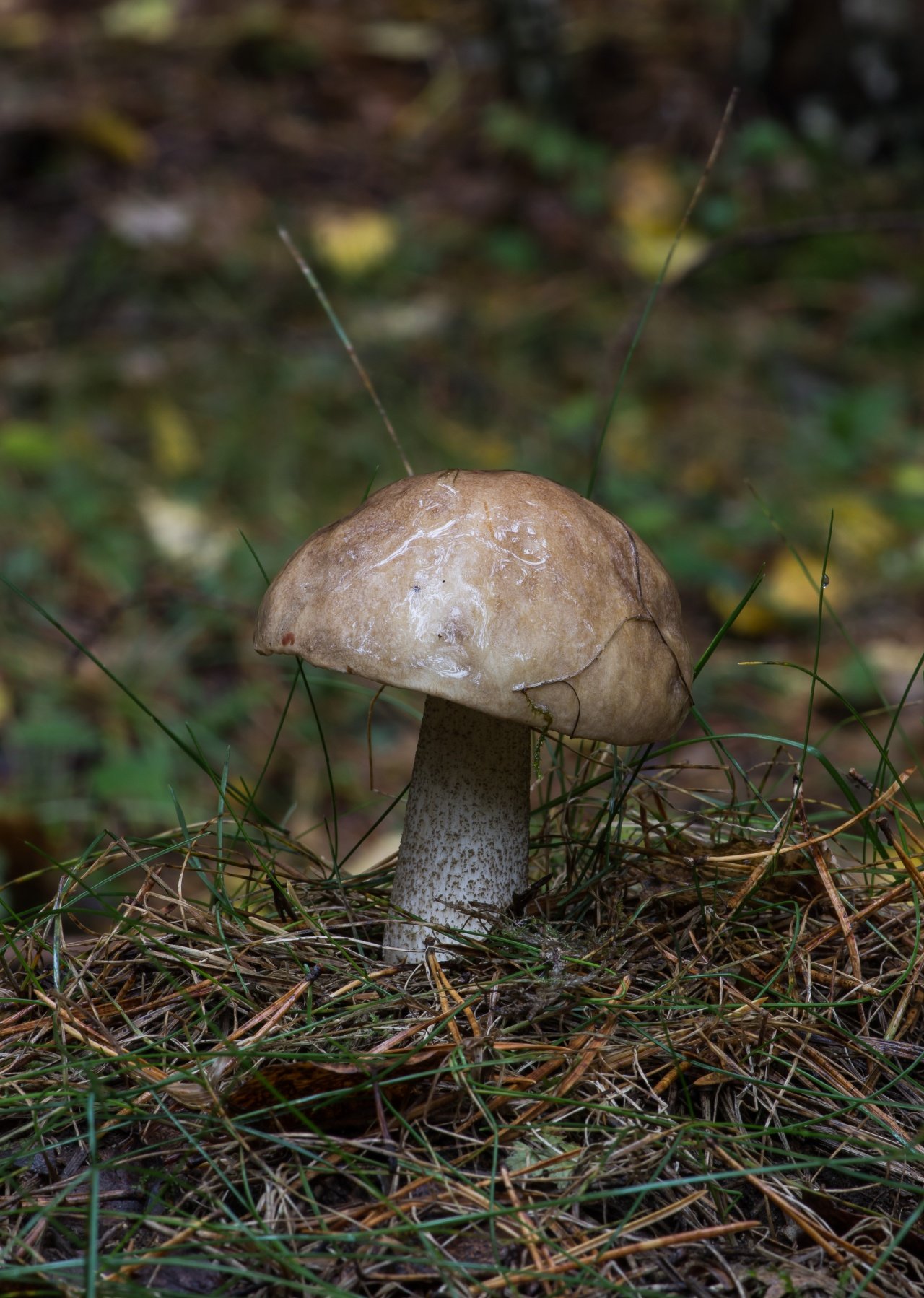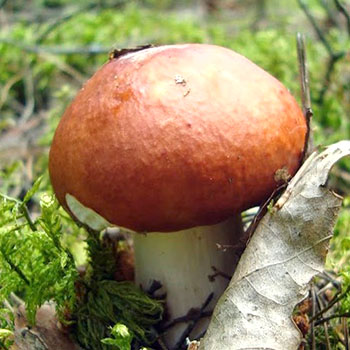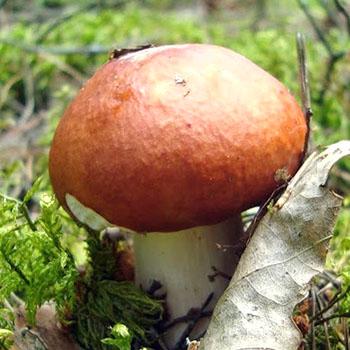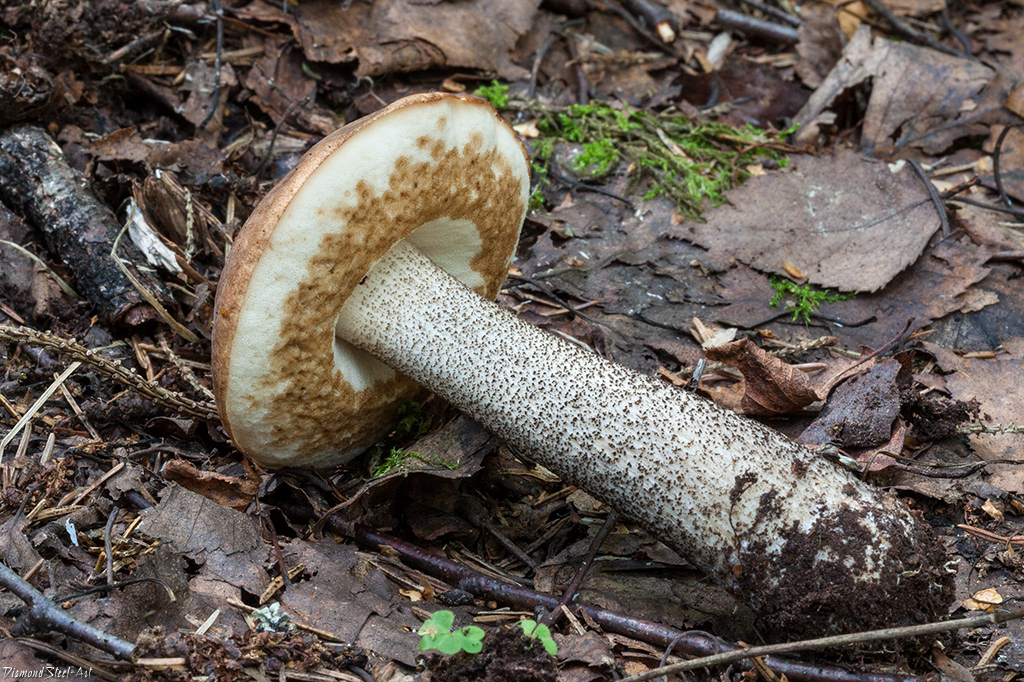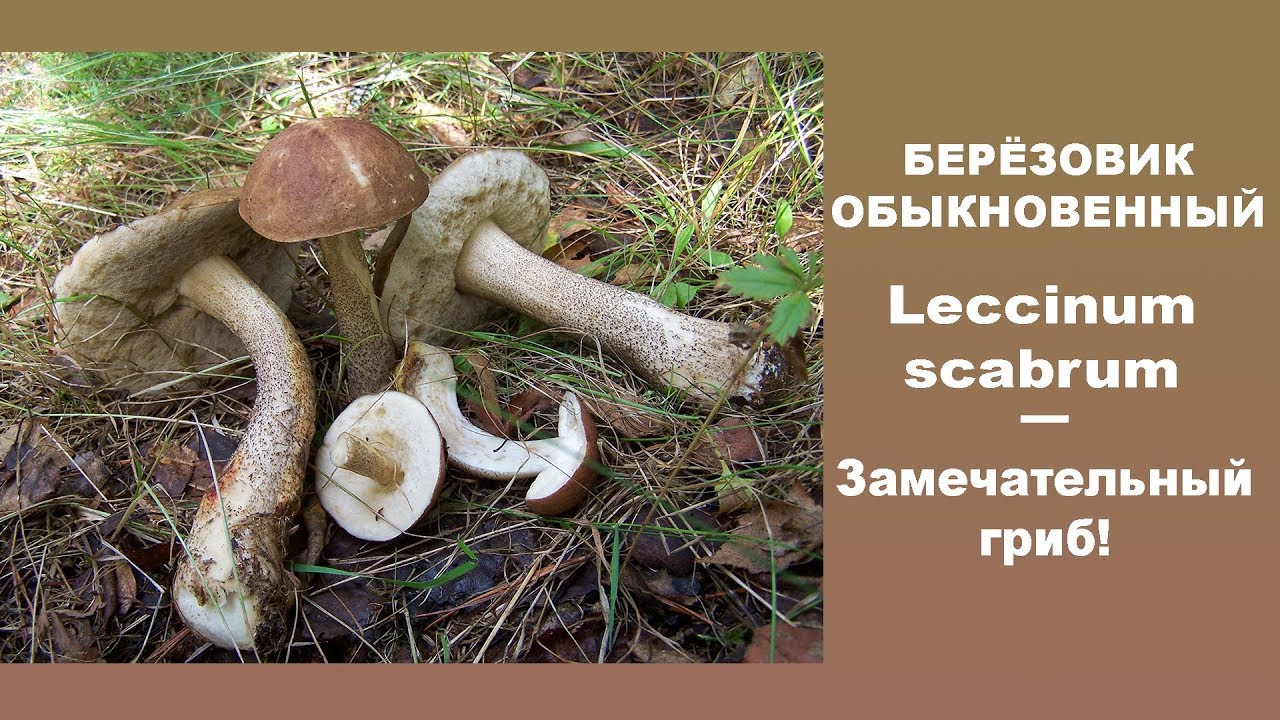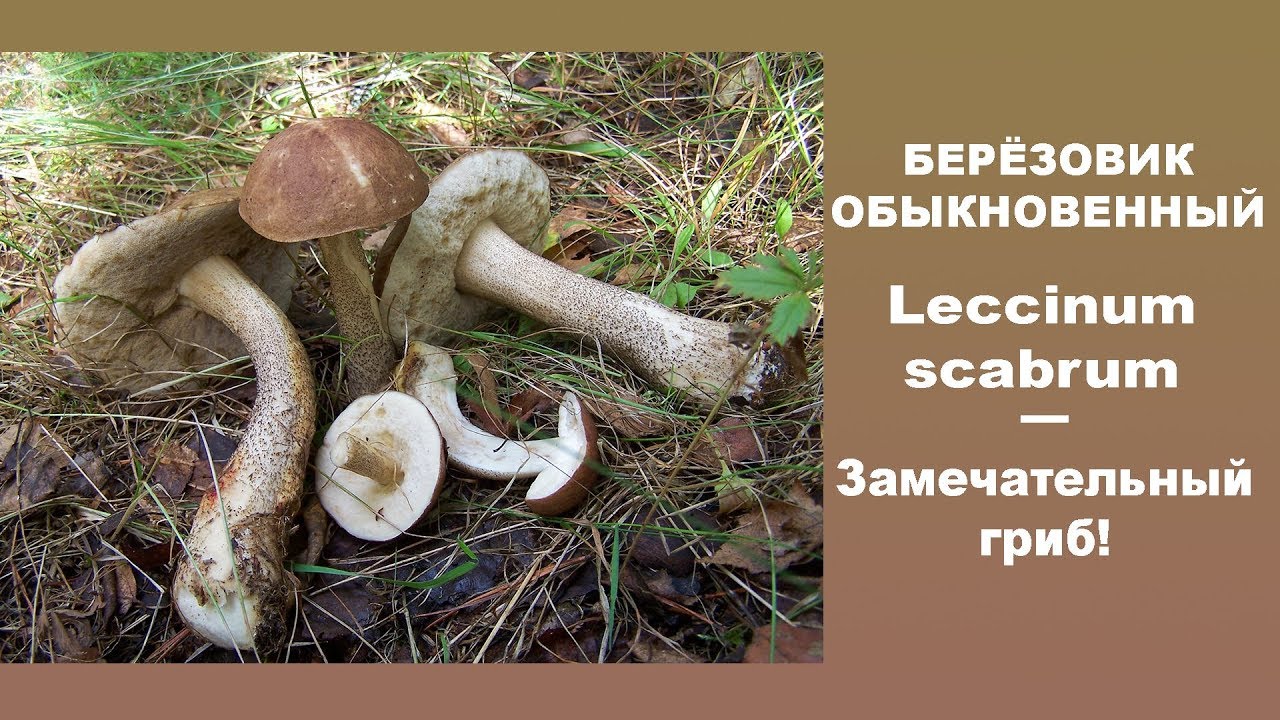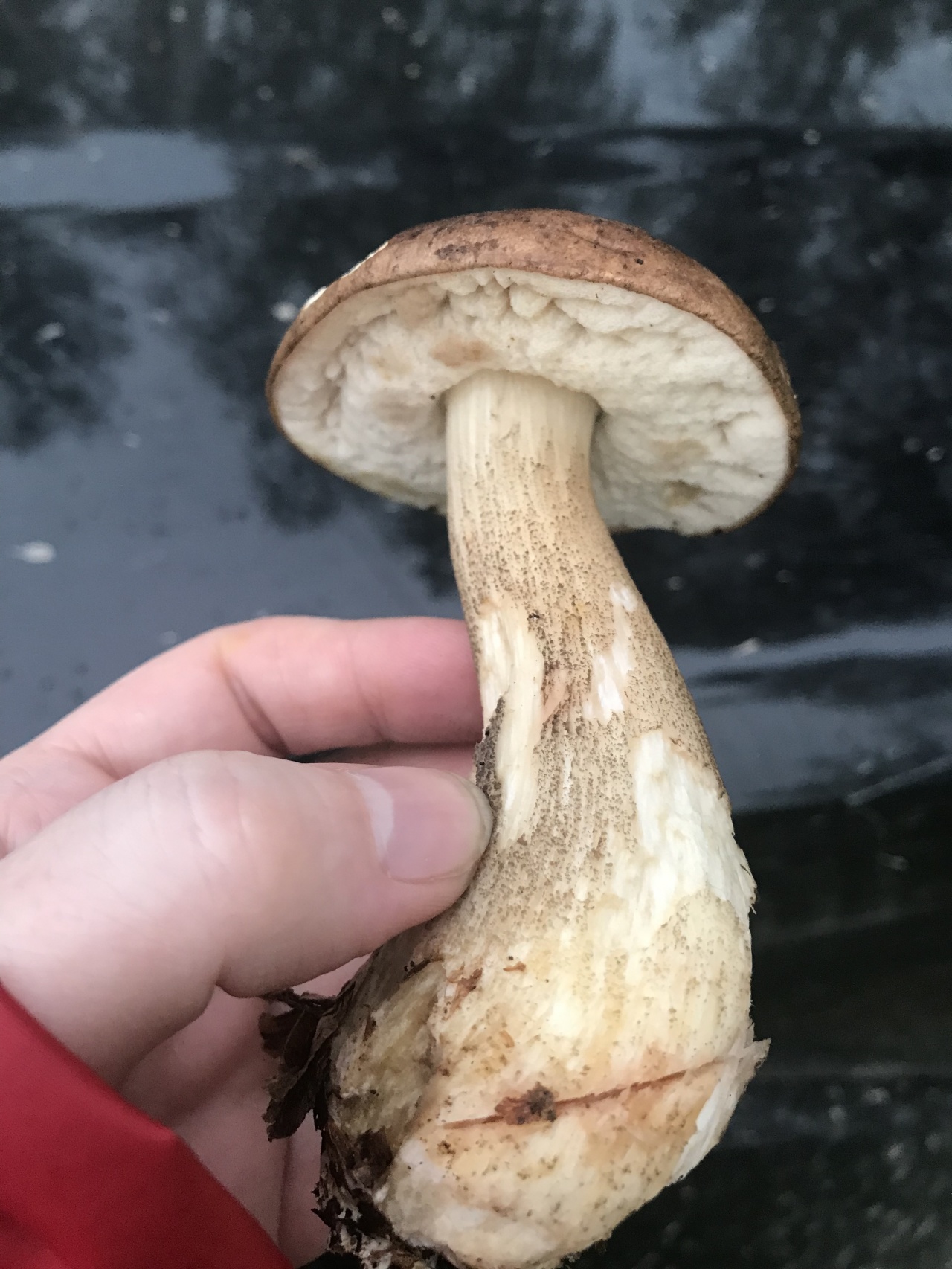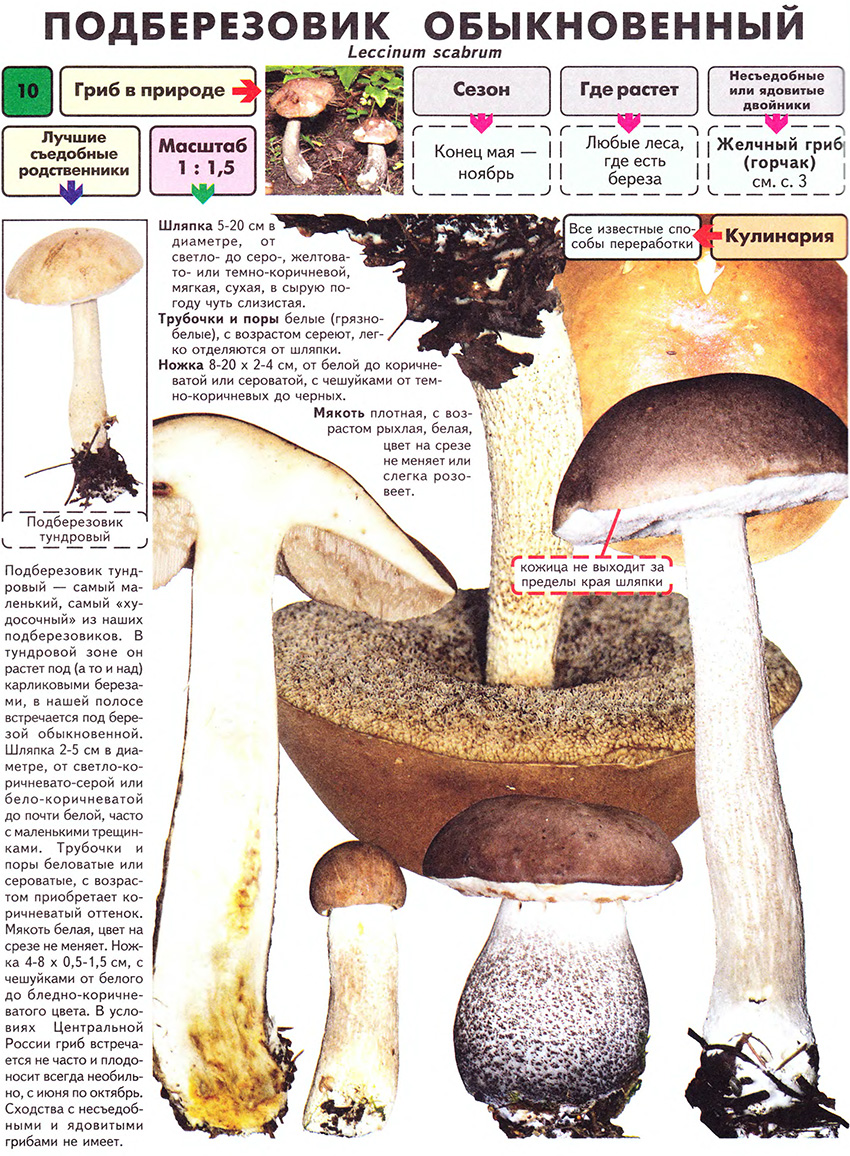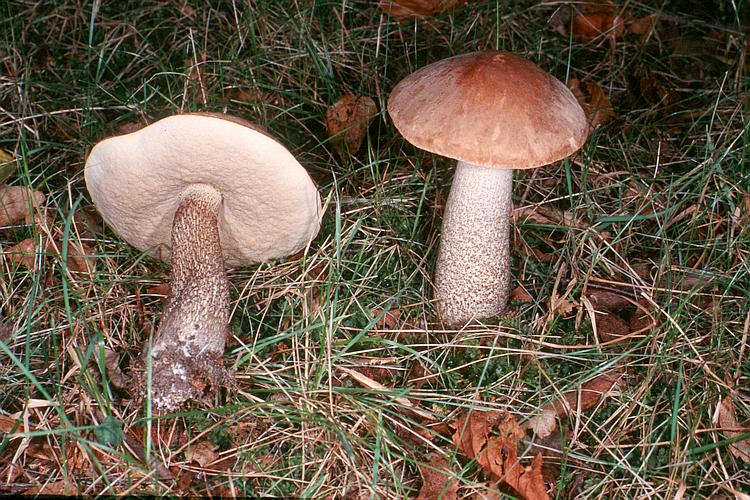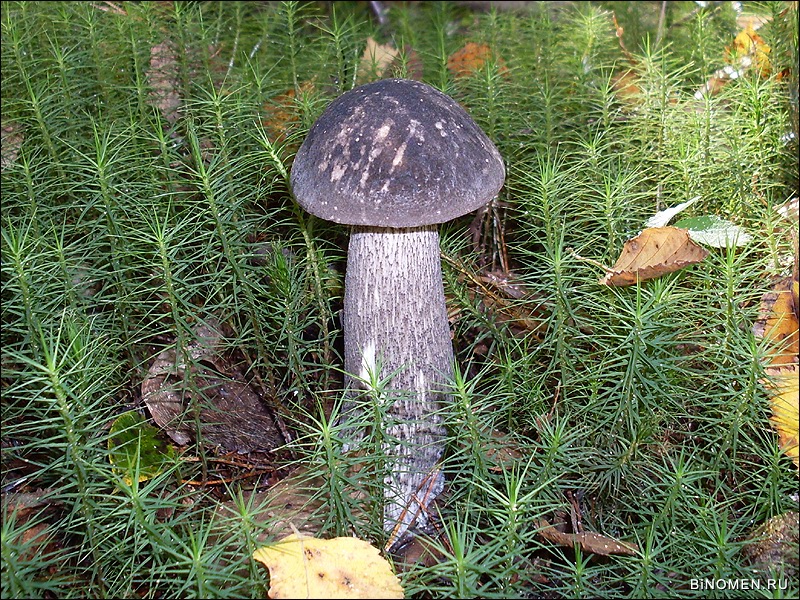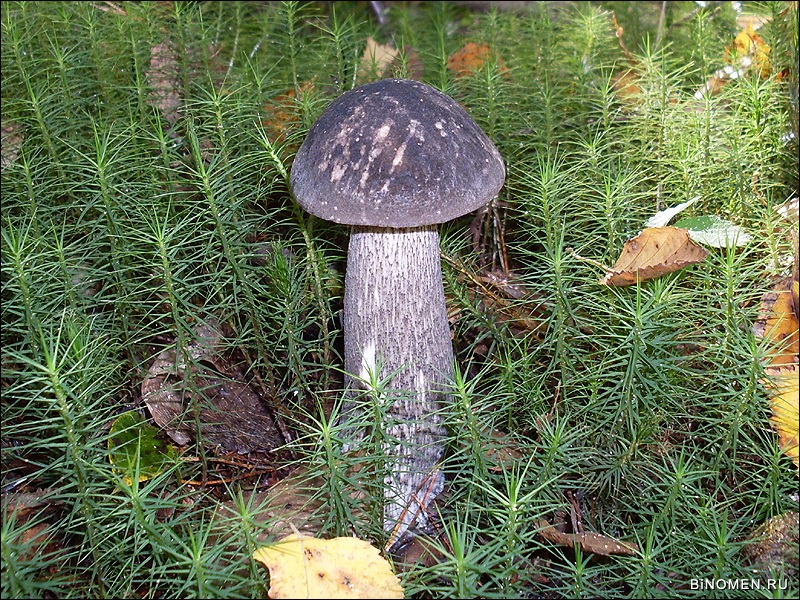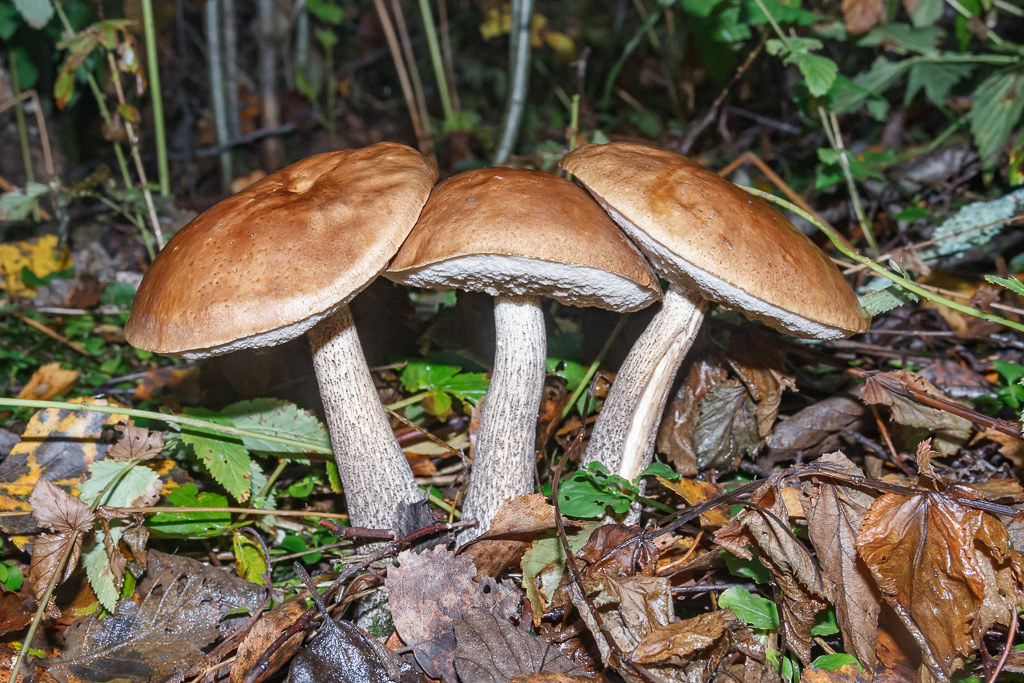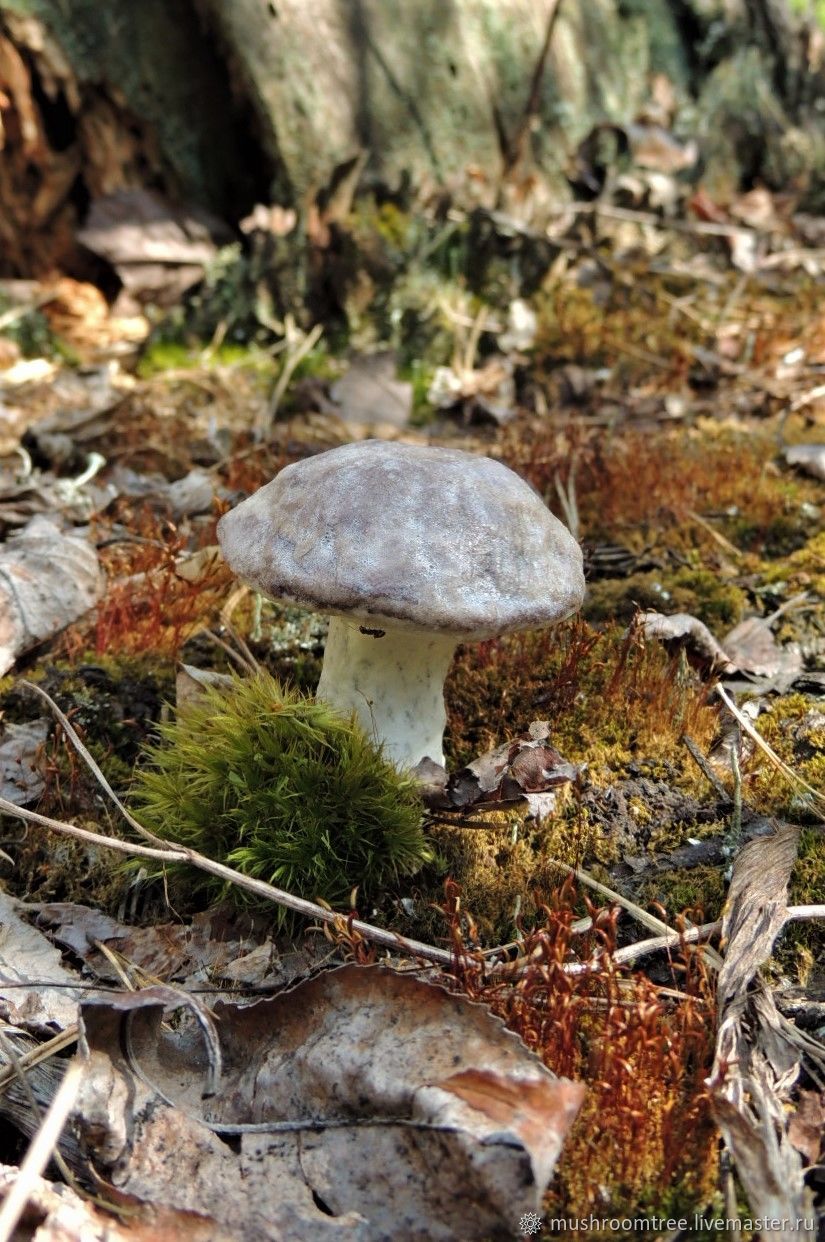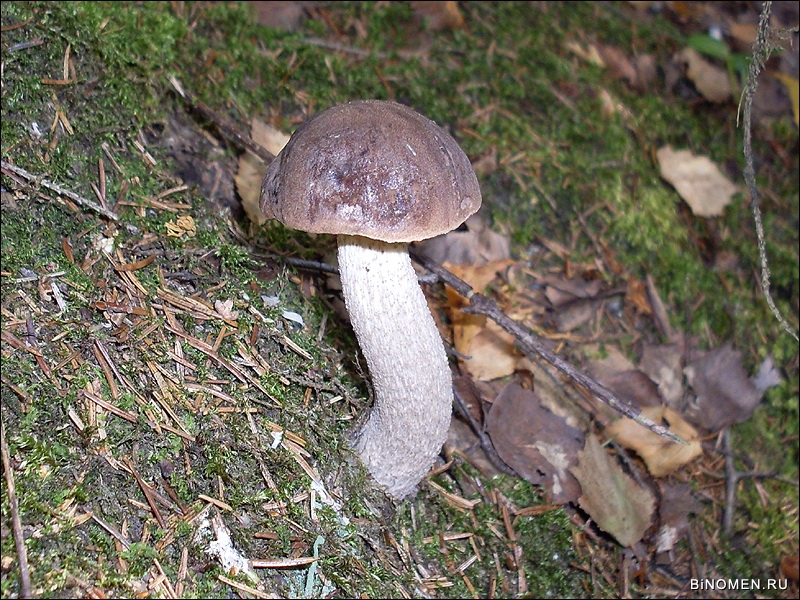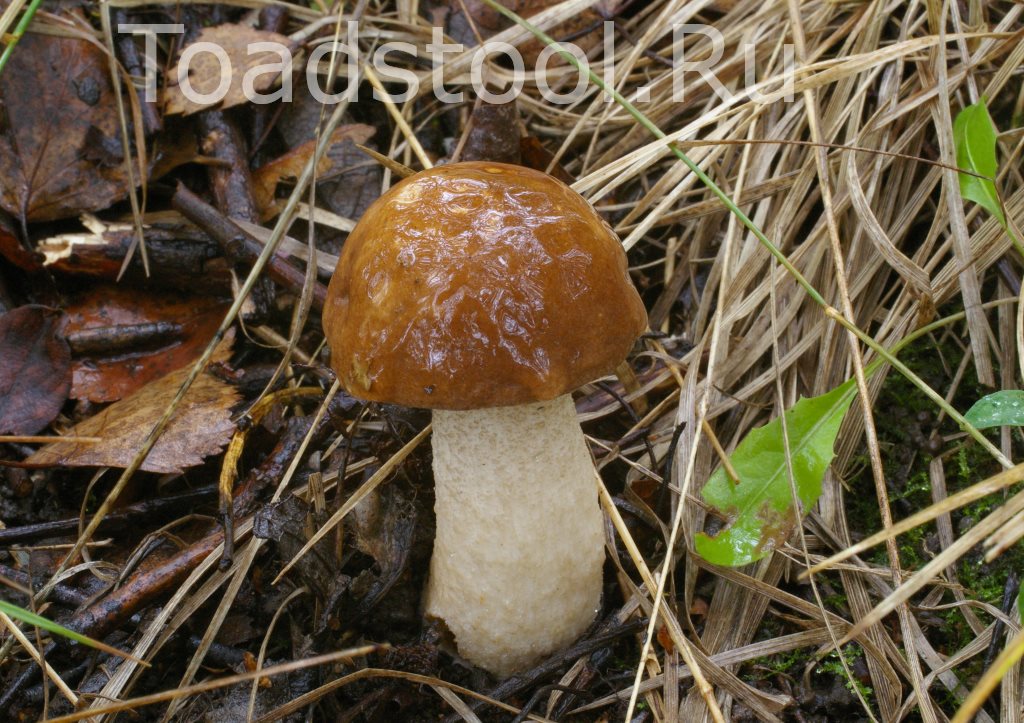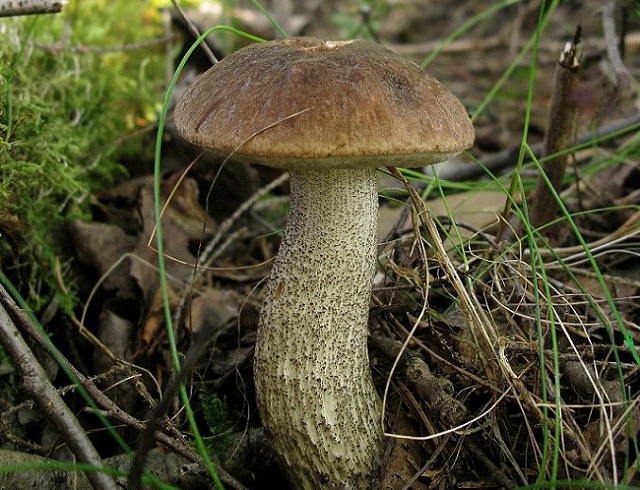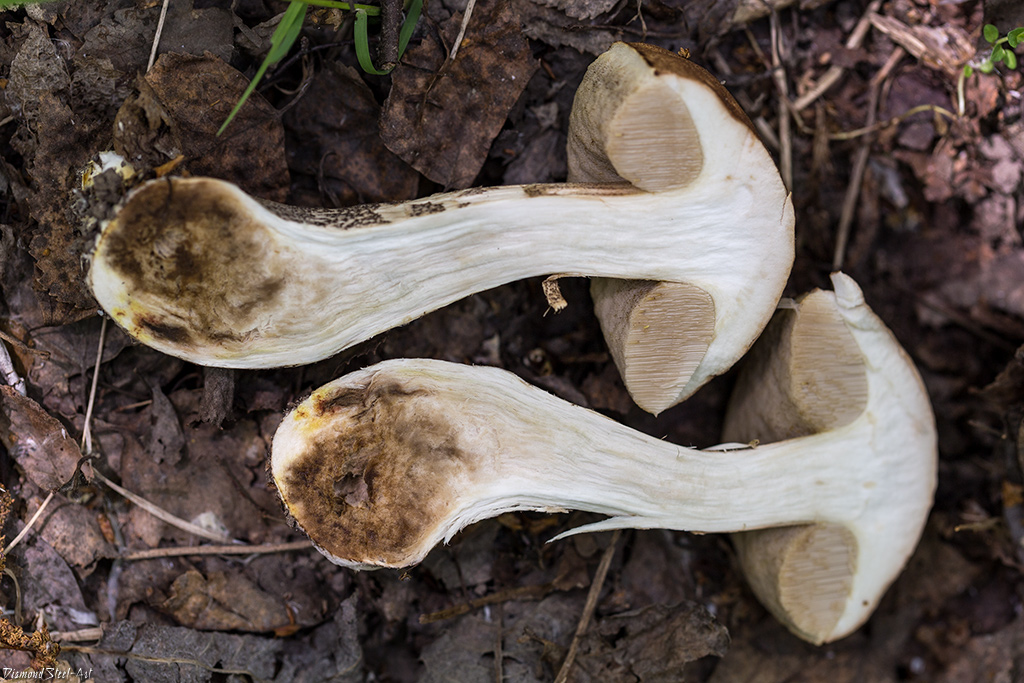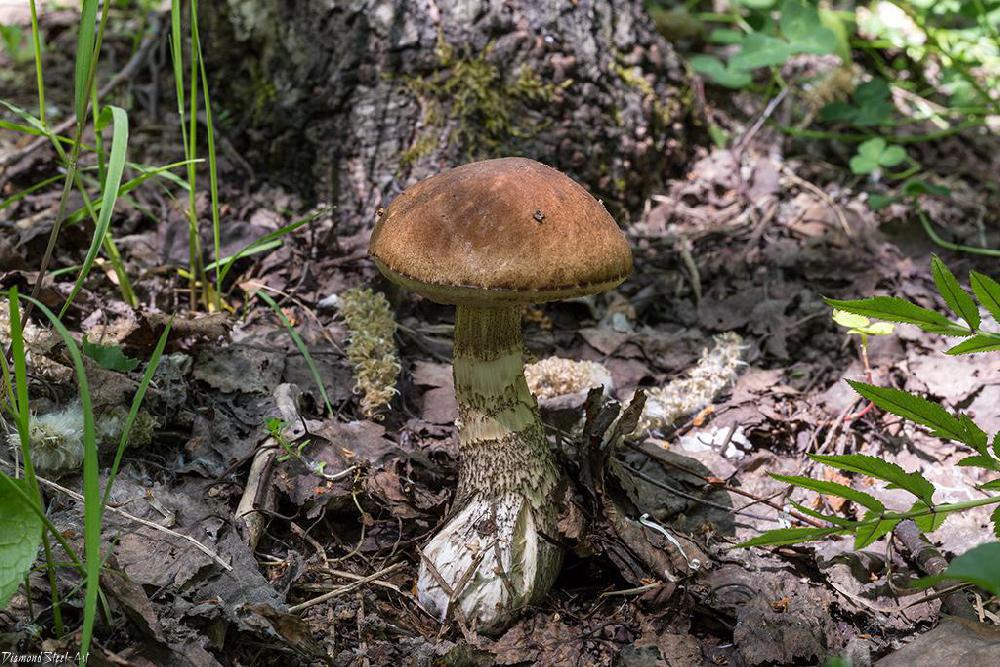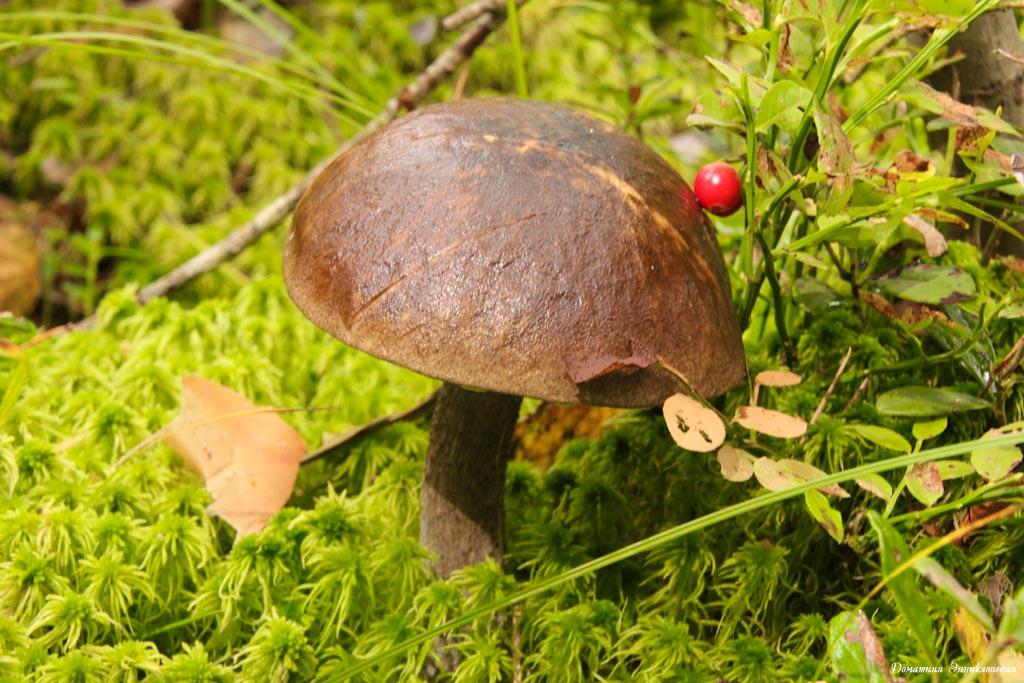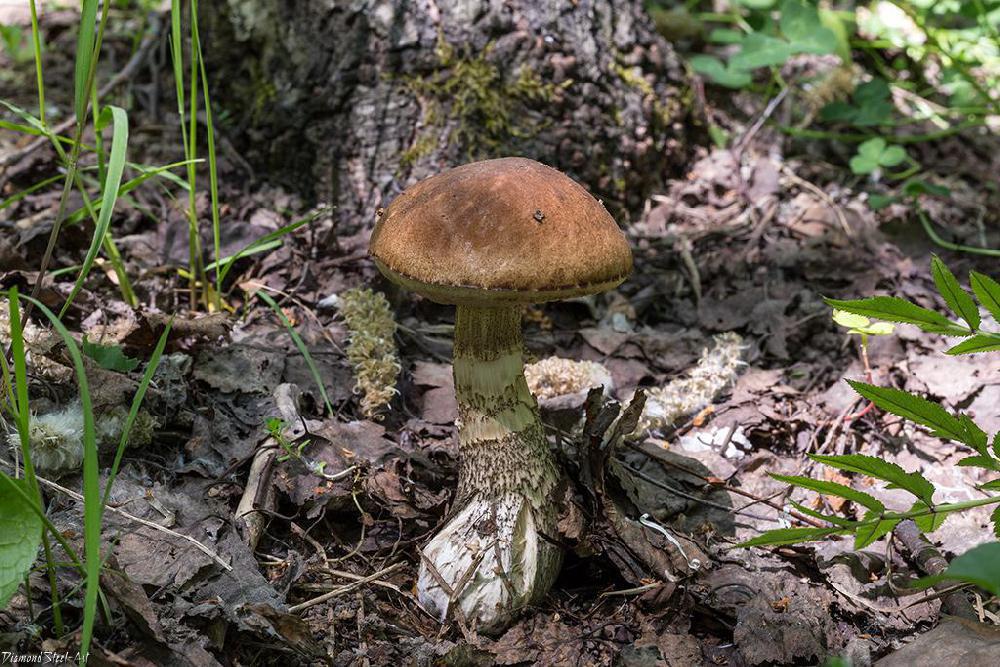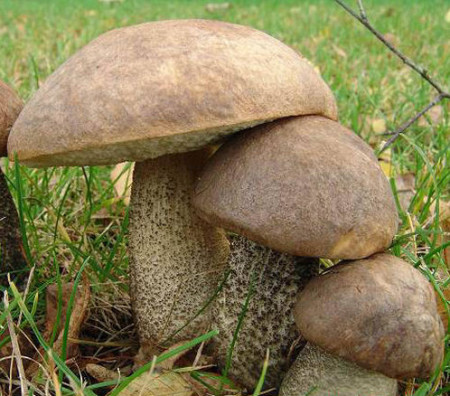Where and how do boletus trees grow?
By the way, it is in the tundra zone that they grow unusually large: they can be 30 or 40 cm high, there they are sometimes called "birch trees"
In early summer, when rye spikes (hence the name - "spikelet"), it is better to look for brown birch trees in places warmed by the sun - forest edges, roadsides, meadows, rare light birch forests, not very old clearings.
During school years in the Moscow region, we collected a lot of mushrooms in the meadows, closer to the forest. Mushrooms grow remarkably on cow pastures. Apparently, cows on hooves are actively pulling spores away. Well, and fertilize, of course, from the heart!
Later, the mushrooms move to wetter and shady places. There are many of them in the spruce forest diluted with birches, mixed forest, oak forests.
At the beginning of autumn, if it is warm, brown birch trees can enter the third fruiting circle, only they are again getting out to heated and illuminated places.
While in the Arctic, a huge number of brown birch trees were collected in July. The summer was hot, the permafrost from above was actively thawing - there was plenty of space for mushrooms.
Most often, light-headed mushrooms are found in wet places, and dark-headed ones in dry places. In deciduous forests, on the edges, on the outskirts of meadows, brown birch trees are often found in groups, so it makes sense to thoroughly explore the surroundings near the found mushroom.
Brown birch trees are mushrooms, with the collection and use of which you do not need to tighten: they grow quickly, in a day they can stretch out almost on a matchbox. On the 5-6th day, they already ripen completely and begin to age. Moreover, the aging process is going on rapidly. Because of this, it is advisable to process the harvested mushrooms as quickly as possible.
Common boletus (Leccinum scabrum). Tatiana Nikolina Grabovik, or Gray boletus (Leccinum griseum) Marsh boletus (Leccinum holopus). Olev Mihkelmaa
False doubles
Boletus mushrooms are quite similar to each other and often only a specialist can separate one species from another. But since all varieties of boletus are edible, then there will be no trouble if, when collecting in a basket, for example, gray or ordinary boletuses fall to the multi-colored boletus.
As for the multicolored boletus, it has the greatest similarity with the pink boletus, common, hard, smoky, and especially with the black boletus.
Having met a young mushroom, some mushroom pickers even ask themselves the question: how to distinguish a multicolored boletus from a boletus? The main difference is the flesh of the latter that turns blue when cut.
It is much more important not to confuse boletus mushrooms with poisonous mushrooms, which pose a threat not only to health, but sometimes to human life.
Boletus is false
The boletus does not have a multi-colored poisonous twin, however, there is a species that has an external resemblance to it, which cannot be eaten. This boletus is a false or gall mushroom (Tylopilus felleus). It is not poisonous, but it is also not suitable for food, since the taste of its pulp is very unpleasant, bitter, pungent, does not disappear during cooking, but only intensifies. Even a small piece of false boletus can ruin the whole mushroom dish or preparation.
How to distinguish multicolored boletus from false?
The main distinguishing features are:
- The false boletus, in contrast to the multicolored boletus, has a fleshy leg.
- The hymenophore (lower part of the cap) of the gall fungus is pinkish, in old specimens it is dirty pink.
- The leg of the boletus boletus is covered with numerous dark scales, and the boletus boletus has a mesh pattern resembling a porcini mushroom, only of a dark color.
- There are no insects on the surface of the gall fungus, since they are not attracted by its bitter taste.
Useful properties of boletus boletus.
The pulp of boletus boletus contains substances that are useful for the body. The composition of these substances is well balanced. In terms of the number of vitamins, boletus mushrooms are not inferior to beef and veal, they contain vitamins A, B1,2,9, C, E, D and PP. They also contain magnesium, potassium, iron, cobalt, sodium, manganese, zinc and phosphorus, and this despite the fact that they are 90% water. In addition, common boletus boletus contains fats, monosaccharides, disaccharides, fiber and useful acids.
Common boletus stimulates blood circulation and strengthens the heart muscle. These mushrooms are considered a dietary product, since they have a low calorie content, in addition, they remove toxins. They are very useful for those wishing to lose weight, as they cleanse the intestines and destroy fat cells.
With the regular use of common boletus, the vessels are cleansed, the activity of the nervous system, kidneys is normalized, the level of sugar and cholesterol decreases. These mushrooms are excellent antioxidants. Boletus also improve the condition of the blood, musculoskeletal system and bone marrow. Due to the fact that they stimulate cell renewal, these mushrooms have a rejuvenating effect.
The use of boletus in cosmetology.
They have a positive effect on the condition of the skin and mucous membranes. In folk medicine, boletus mushrooms are dried, made into gruel and used as an anti-inflammatory and smoothing agent. Aqueous solutions help in the treatment of skin conditions, wounds and ulcers. Rinse hair with a decoction of boletus boletus. And the baths help to strengthen the nails. Pulp masks improve skin elasticity, tone and rejuvenate it.
Contraindications for the use of common boletus.
This product is not recommended for individual intolerance. Also, they should not be given to children under 12 years of age.
Boletus is used with caution for diseases of the liver, kidneys and stomach. Old fruiting bodies can be dangerous to health
Is it possible to eat lumps
Mushrooms from the genus stump are completely suitable for food. Moreover, they belong to the gourmet category, it is considered a great success to collect a full basket of boletus and boletus boletus. Processing is required minimal, it is not necessary to soak the fruit bodies for a long time, and the taste of the mushrooms is very pleasant and soft.
The stubs are suitable for any culinary treatment. Most often they are boiled, pickled and fried, and gourmet mushrooms can also be dried. Dried boletus and aspen mushrooms can be stored for a very long time, and they are most often used to add to soups and other hot dishes.
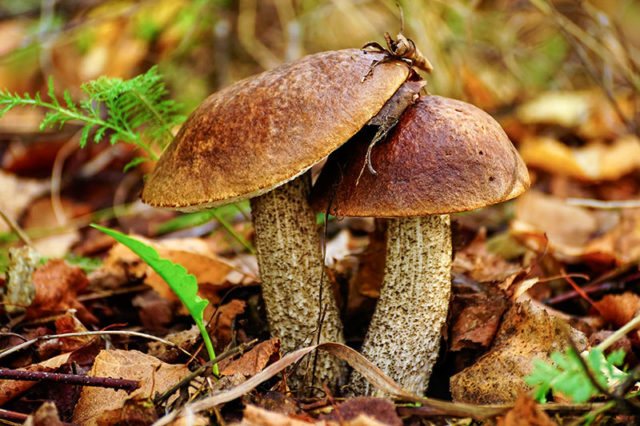
Definitioner
- Basidia (Basidia)
-
Lat. Basidia. A specialized structure of sexual reproduction in fungi, inherent only in Basidiomycetes. Basidia are terminal (end) elements of hyphae of various shapes and sizes, on which spores develop exogenously (outside).
Basidia are diverse in structure and method of attachment to hyphae.
According to the position relative to the axis of the hypha, to which they are attached, three types of basidia are distinguished:
Apical basidia are formed from the terminal cell of the hypha and are located parallel to its axis.
Pleurobasidia are formed from lateral processes and are located perpendicular to the axis of the hypha, which continues to grow and can form new processes with basidia.
Subasidia are formed from a lateral process, turned perpendicular to the axis of the hypha, which, after the formation of one basidium, stops its growth.
Based on morphology:
Holobasidia - unicellular basidia, not divided by septa (see Fig. A, D.).
Phragmobasidia are divided by transverse or vertical septa, usually into four cells (see Fig. B, C).
By type of development:
Heterobasidia consists of two parts - hypobasidia and epibasidia developing from it, with or without partitions (see Fig. C, B) (see Fig. D).
Homobasidia is not divided into hypo- and epibasidia and in all cases is considered holobasidia (Fig. A).
Basidia is the place of karyogamy, meiosis and the formation of basidiospores. Homobasidia, as a rule, is not functionally divided, and meiosis follows karyogamy in it. However, basidia can be divided into probasidia - the site of karyogamy and metabasidia - the site of meiosis. Probasidium is often a dormant spore, for example in rust fungi. In such cases, probazidia grows with metabasidia, in which meiosis occurs and on which basidiospores are formed (see Fig. E).
See Karyogamy, Meiosis, Gifa.
- Pileipellis
-
Lat. Pileipellis, skin - differentiated surface layer of the cap of agaricoid basidiomycetes. The structure of the skin in most cases differs from the inner flesh of the cap and may have a different structure. The structural features of pileipellis are often used as diagnostic features in descriptions of fungi species.
According to their structure, they are divided into four main types: cutis, trichoderma, hymeniderma and epithelium.
See Agaricoid fungi, Basidiomycete, Cutis, Trichoderma, Gimeniderm, Epithelium.
Description of common boletus.
The shape of his cap is at first hemispherical, then becomes cushion-shaped. Its diameter reaches 15 centimeters. The surface of the cap is thin or bare, and mucus appears on it in wet weather. The cap color varies from dark brown to light gray. Obviously, the color is influenced by the growing conditions of the fungus and the type of tree under which it settled.
The flesh of the boletus is usually white; at the break, it may turn slightly pink or not change color. The pulp emits a pleasant mushroom aroma, it also tastes good. In older specimens, the flesh becomes watery and too spongy.
There are long tubes under the cap, often they are united. The tubules are easily separated from the cap. The color of the tubules at a young age is white, and later becomes dirty gray. The coloration of the spore powder is olive-brown.
The leg of the boletus is long and thick enough, its height reaches 15 centimeters, and the girth is up to 3 centimeters. Inside, the leg is solid, with age it becomes hard, woody. It is cylindrical in shape, slightly widened at the bottom. The surface of the peduncle is gray-white with longitudinal dark scales.
Brown birch (Leccinum scabrum)
- Other names for the mushroom:
- Obabok
- Beryozovik
- Common boletus
Synonyms:
Hat:
In a boletus, the cap can vary from light gray to dark brown (the color obviously depends on the growing conditions and the type of tree with which the mycorrhiza is formed). The shape is semi-spherical, then pillow-shaped, naked or thin-clotted, up to 15 cm in diameter, slightly mucous in wet weather. The pulp is white, does not change color or slightly turns pink, with a pleasant "mushroom" smell and taste. In old mushrooms, the pulp becomes very spongy, watery.
Spore-bearing layer:
White, then dirty gray, the tubes are long, often eaten by someone, easily separated from the cap.
Spore powder:
Olive brown.
Leg:
The length of the boletus leg can reach 15 cm, the diameter is up to 3 cm, solid. The shape of the stem is cylindrical, slightly widened at the bottom, gray-whitish, covered with dark longitudinal scales. The pulp of the leg with age becomes woody-fibrous, tough.
Spreading:
Brown birch (Leccinum scabrum) grows from early summer to late autumn in deciduous (preferably birch) and mixed forests, in some years it is very abundant. Sometimes found in surprising quantities in spruce plantings interspersed with birch. It gives good yields in very young birch forests, appearing there almost the first among commercial mushrooms.
Similar species:
The genus of Boletus includes many species and subspecies, many of them are very similar to each other.The main difference between boletus boletus (a group of species united under this name) and boletus boletus (another group of species) is that boletus boletus turn blue at the break, while boletus boletus does not. Thus, it is easy to distinguish between them, although the meaning of such an arbitrary classification is not entirely clear to me. Moreover, in fact, there are actually enough among the "boletus" and species that change color - for example, pink boletus (Leccinum oxydabile). In general, the further into the forest, the more varieties of paints.
It is more useful to distinguish the Brown Birch (and all decent mushrooms) from the gall mushroom. The latter, in addition to the disgusting taste, is distinguished by the pinkish color of the tubes, a special "greasy" texture of the pulp, a peculiar mesh pattern on the leg (the pattern is like that of a porcini mushroom, only dark), a tuberous leg, unusual places of growth (around stumps, near ditches, in dark conifers forests, etc.). In practice, confusing these mushrooms is not dangerous, but offensive.
Edibility:
Brown birch - Normal edible mushroom. Some (Western) sources indicate that only the caps are edible, and the legs are supposedly too hard. Absurd! The prepared hats are just different with a nauseating gelatinous consistency, while the legs always remain strong, collected. The only thing that all reasonable people agree on is that the tubular layer of old mushrooms must be removed. (And, ideally, take it back to the forest.)
Author's notes: Despite the seeming routine, the birch is a rather mysterious mushroom. First, fruiting. For several years it can grow in Homeric quantities everywhere and everywhere. In the early 90s, boletus was, without exaggeration, the most widespread mushroom in the Naro-Fominsk region. He was loaded with buckets, troughs, trunks. And in one year he disappeared, and he still does not exist. There were enough whites as they are (despite the crowds of greedy summer residents), and the boletus has disappeared. From time to time only monstrous freaks come across: small, thin, twisted.
In the summer of 2002, for obvious reasons, there were no mushroom pickers at all, and what do you think? from time to time we came across quite decent boletus boletus. Something will happen next time, I thought.
And the next time was not long in coming. The summer and autumn of 2003 turned out to be so fruitful that all speculation about the degeneration of the boletus can be safely sent to the dump of opinions. The birch trees went in June and walked and walked and walked without interruption until the beginning of October. The field, overgrown with young birch trees, was completely trampled by mushroom pickers - but without a bag of these brown birch trees, not a single good person returned. The forest edges were cluttered with stools. Three times in a row (without missing a day) I could not get to the place where I expected to meet a black lump, my character let me down: I immediately grabbed all the young and strong birch trees that I saw, and after 100 meters my hike ended: it is banal not there were containers. I am sure that for many years the 2003 season will be remembered as a fairy tale, but then the sensations were different. It seemed that literally in front of my eyes the value of the boletus was being devalued.
Time and place of fruiting
Where to look for these mushrooms is clear from the name. They grow in separate groups, their environment is birch or mixed forest. They are not always located near the tree trunk, often appear above young tree roots.
Boletus boletuses love moisture, so take a closer look at damp, but well-lit areas of deciduous forests - meadows or forest edges. You can collect a good "mushroom catch" in the peat bogs. The species prefers dense vegetation and thickets of moss. Sometimes it grows near lakes or swamps.
It is popular in Russia, often ends up in mushroom pickers' baskets. He is also known in the northern regions of Western Europe and America.
It is better to go hunting for fruits in late August and early September - this is the "richest" season. Small leftovers can be found later.Fruits cease to appear shortly before the first frost
It is important that there is no drought before going into the forest, otherwise it will not be possible to get boletus
Species diversity and description
Boletus is a collective name for a number of mushrooms of the genus Leccinum (Leccinum). Excellent growing conditions have led to the fact that the boletus species have minor external differences.
It is important to know what a particular boletus looks like in order to be able to distinguish it from other mushrooms.
Marsh (Leccinum holopus)
Marsh boletus, or white, got its name from the place of growth. This mushroom is noticeably different from other boletus mushrooms. The cap is on average 3 to 10 cm in diameter, but it can reach 16 cm. The convex cushion shape is characteristic only of young mushrooms; with age, it becomes flat. The surface is smooth, sometimes wrinkled. The hat is painted in a color uncharacteristic for this group: whitish-cream or grayish with a bluish or greenish tint.
The leg is thin (1-3 cm), elongated (from 5 to 15 cm), whitish or grayish in color, covered with scales of the same color. The scales turn brown only after aging, drying of the fungus; it is better not to collect such specimens.
The tubular layer is first white, then a dirty grayish color. The pulp is watery, white with a slight greenish tinge; denser in the leg, at the base its color becomes bluish-greenish. Does not change color upon contact with air.
Harsh (Leccinum duriusculum)
The cap is rarely more than 15 cm. The shape is hemispherical, later - pillow-shaped, convex. In young mushrooms, the skin is silky, even pubescent, then it becomes smooth; becomes slimy in rainy weather. Depending on the conditions, the color can vary from light gray-brown, sometimes with a purple tint, to brownish-red or ocher-brown.
The tubules are light, creamy, then yellowish or grayish. Olive brown marks remain when pressed.
The stem is cylindrical, rarely pointed at the base; covered with brownish scales that form a reticular pattern. Colored unevenly: cream on top, brownish below. The flesh in the cap is dense, white, reddens at the cut. In the leg, it is denser, harsh; yellowish-green at base, light above. The smell is weak.
Gray (hornbeam) (Leccinum carpini)
This mushroom is most similar to the common boletus. The cap is hemispherical, eventually cushion-shaped, up to 8 cm in diameter, rarely up to 14 cm; in young specimens, the edge is bent, straightens with age. The surface is dry, velvety, slightly grainy; painted in brownish-gray tones. In rainy weather, the color darkens to olive brown.
The leg is cylindrical, rather thin (up to 4 cm), long (from 5 to 13 cm); in the lower part it has a clavate thickening. The color is uneven: brownish at first, grayish closer to the cap. Its entire surface is covered with whitish scales, which turn yellow over time, then acquire a dark brown hue.
The tubular layer is watery, freely separates from the pulp, whitish or sandy-gray in color; a notch is visible in the area of contact with the leg. The pulp is white: soft in the cap and fibrous in the stem, it becomes harsh in old mushrooms. In air, it changes color first to pinkish-purple, then darkens almost to black.
Black (Leccinum scabrum)
Black boletus has a small (5-9 cm) dark brown or almost black cap. The skin cracks with age, partially exposing the flesh. The leg is proportionate, cylindrical, white, covered with small dark scales. The tubules are brownish gray. The pulp is white, darkens at the break.
Turning pink (Leccinum roseofractum)
The pink boletus has a convex, with age, pillow-shaped cap of medium size (up to 15 cm). The skin is gray-brown, pinkish-brown, may be darker, up to dark brown; dry.
Stem thin, long, cylindrical, with a thickening at the base in young specimens; sometimes bends, white with brownish scales, which become almost black with age. The tubular layer is light, becomes dirty gray with age. The pulp is firm. On the cut, this boletus turns pink.
Views
The following types of boletus are distinguished:
Swamp
This boletus boletus has an almost white cap and grows next to swamps. Its flesh is very loose and very boiled during cooking, therefore, such a mushroom is eaten only in its young form.
Gray
Another name for this species is "hornbeam", since its mycorrhiza is formed most often with hornbeams. Ripens from June to October. This mushroom is valued less than the common boletus because of the lower density of the pulp of its caps.
Black
A characteristic feature of this type is the dark color of the cap (it can be black or dark brown). Another name for the species is "blackhead". It is found in birch and pine forests, loves damp places.
Harsh
Also called hard and poplar boletus. Mycorrhiza in such a fungus is formed with poplars and aspens. This mushroom loves calcareous soil. Its dense flesh is very rarely affected by worms.
Chess
It is also called blackening, because on the cut, the flesh of such a mushroom acquires a red-violet-brown hue, and then turns black. The mycorrhiza of this fungus is formed with beeches and oaks.
Turning pink
The peculiarity of this type of boletus is that at the break, its pulp acquires a pink tint. It grows in birch forests in damp and swampy places.
Description
In total, there are about 40 varieties, but each boletus mushroom from this family has only minor differences. The color ranges from light to almost black. Most often, grayish or brownish representatives of the species are found. Young ones are usually white boletus, but later on, their stem and cap acquire brown shades.
In addition, the properties are related to the place where the mushroom was found. So marsh boletus, which grows mainly in damp areas, retains a whitish tint even with age, but is considered less valuable due to its too loose pulp. Black boletus is also found on the soil along the edges of the raised bogs.
Distinctive features of the appearance:
Leg ... leg height from 3 to 15 cm on average;
Hat ... the diameter of the cap in an adult mushroom is about 15-18 cm;
the cap has the shape of a characteristic hemisphere, and as it grows it becomes like a ball or pillow;
at high air humidity, the surface may become slimy;
the color usually varies from whitish to grayish and brown.
Lighter and younger boletus mushrooms are usually valuable for mushroom pickers, because during the aging process, their pulp becomes too loose and watery. It seems extremely difficult to cook something from them.
Ecology and distribution
Common boletus is widespread. It is found in Eurasia in the vastness from Western Europe to Eastern Siberia, some species also grow in North and South America. Boletus grows in the tundra and forest-tundra. It is most often found in forests with birches, with which it forms mycorrhiza, and not only large trees can be found, but also dwarf birches, the height of which can be only a few centimeters.
The described genus of mushrooms tends to high humidity, therefore it is often found near swamps and forest reservoirs. There you can find white, black, as well as pink boletus, in which the flesh at the break has a pinkish tint. These mushrooms are distinguished by an extremely high growth rate, reaching 4 cm per day, so they become "adults" in a week, and after that they already begin to age.
Usually the preparation of boletus boletus is described by different recipes.They are highly regarded for their excellent taste and useful properties, including from the point of view of medicine. First of all, this is a low-calorie product, which, nevertheless, contains a huge amount of trace elements, therefore it is well suited for a balanced diet.
From a medical point of view, beneficial qualities are manifested in the fact that the composition of boletus normalizes the state of the nervous system and regulates blood sugar levels. When using this product, kidney function is normalized. No fears should arise when collecting boletus boletus - the class is completely safe and not poisonous. However, in some cases, individual intolerance may be observed, because mushrooms are a fairly specific food.
Due to the fact that there are many varieties of this mushroom, there is a danger of confusing it with something else. The most dangerous is the gall fungus, which is quite common in our forests. Its distinctive feature is an incredibly bitter taste, because of which even worms and insects bypass it. A perfectly clean look of an adult mushroom is the first sign of danger. In a false mushroom, the leg has brick or greenish shades. He also usually has a velvety hat, whereas the real one has a smooth and even slimy one. If a gall fungus gets into a dish, it will immediately turn bitter, so it should be discarded immediately.
Mushrooms and their varieties
Mushrooms are one of the most favorite mushroom pickers. In terms of popularity, they can only compete with whites. Boletus and aspen mushrooms are beautiful in appearance, tasty, healthy and versatile. It is useful for all fans of quiet hunting to know their properties and description, distribution and collection time, basic cooking rules and the presence of false species.
Mushrooms and their varieties
general characteristics
Buttons are a valuable and very tasty edible mushroom. Their mycelium grows in symbiosis with tree roots (most often with birches).
They are distributed in all regions of the temperate zone, partly in the subtropics and subpolar zones.
Boletus are a genus that includes all types of boletus and boletus boletus. Their description has some differences, but the main characteristics are similar.
External parameters
| Hat | Dense, beautiful shape, hemispherical. With age, she becomes prostrate. |
The surface is matte, velvety.
Color - from reddish to dark red-brown.
Hymenophore
Tubular, characterized by small pores - in young fungi, it is light, and then darkens.
Leg
Plump (especially from below), cylindrical, fibrous, with scales.
Pulp
White, aromatic, very tasty. At the cut site, it changes color, acquiring a reddish, blue or black tint. After heat treatment, the mushrooms turn black.
Beneficial features
Buttons contain proteins necessary for humans, including essential amino acids.
The composition includes valuable trace elements:
In addition, these mushrooms are rich in vitamins (C, B, PP, E and others).
The use of stumps increases immunity, normalizes metabolism, and also improves blood structure, vision, complexion. Fibrous tissue of mushrooms has a beneficial effect on digestion.
Antioxidants are especially valuable in their composition - they slow down aging and counteract cancerous tumors.
Varieties
Boletus and aspen mushrooms, which are united by a common name - boletus, are always welcome guests on the table.
There is an opinion that the former grow especially under birches, and the latter - under aspens, but this is not an immutable rule. Both species can live under different trees, not excluding conifers.
Boletus
The boletus has a bright hat
This species is distinguished by bright hats - red-brown or orange-yellow.
Its pulp is very plump, for which it is appreciated by mushroom pickers. On the cut, it acquires a bluish or brownish tint.
Among the most famous subspecies are: red, white and upland boletus.
Boletus
This mushroom is similar in description to the boletus, but often looks less bright. Its cap is brown rather than reddish-brown, but in young mushrooms it may be the same color.
It has a looser flesh that turns slightly pink when cut. Over time, this species becomes somewhat watery.
Among the most famous species: common, hornbeam, black, pinkish, white.
Where do they grow and when do they collect
You should look for pruning in deciduous and mixed forests.
They like to settle in birch forests, but also under aspen, white poplar, beech, hornbeam, hazel. You can also find it in clearings, forest edges, near forest roads. They can grow in marshy areas, especially peatlands.
Mushrooms begin to appear from the last ten days of May and disappear in late autumn, when frosts strike.
Usually there are three waves of massive crop growth.
- The first falls at the beginning of June.
- The second is in mid-July.
- The third is for September and October.
How to cook properly
Boletus and boletus boletus are tasty and healthy in any form. They can be fried, boiled, stewed, baked and marinated. For the winter, these mushrooms are often dried and frozen.
Preliminary preparation
Mushroom pickers are also loved by mushroom pickers for the reason that they do not require painstaking cleaning.
They are quite large and clean by themselves (you do not need to remove the film from them, for example, from butter, soak or cut the legs).
If necessary, only the base of the mushroom is cut off and the spoiled places are removed. A large specimen is cut into several parts to make it easier to cook or dry.
The wormy parts of the butterflies should be immediately cut off and discarded, since the worms quickly spread to healthy fruit bodies.
Before cooking, boletus and aspen mushrooms are thoroughly washed with water. Before drying, it is better not to wash them, but to wipe them with a slightly damp cloth, after removing the adhered leaves or twigs.
Definitioner
- Basidia (Basidia)
-
Lat. Basidia. A specialized structure of sexual reproduction in fungi, inherent only in Basidiomycetes. Basidia are terminal (end) elements of hyphae of various shapes and sizes, on which spores develop exogenously (outside).
Basidia are diverse in structure and method of attachment to hyphae.
According to the position relative to the axis of the hypha, to which they are attached, three types of basidia are distinguished:
Apical basidia are formed from the terminal cell of the hypha and are located parallel to its axis.
Pleurobasidia are formed from lateral processes and are located perpendicular to the axis of the hypha, which continues to grow and can form new processes with basidia.
Subasidia are formed from a lateral process, turned perpendicular to the axis of the hypha, which, after the formation of one basidium, stops its growth.
Based on morphology:
Holobasidia - unicellular basidia, not divided by septa (see Fig. A, D.).
Phragmobasidia are divided by transverse or vertical septa, usually into four cells (see Fig. B, C).
By type of development:
Heterobasidia consists of two parts - hypobasidia and epibasidia developing from it, with or without partitions (see Fig. C, B) (see Fig. D).
Homobasidia is not divided into hypo- and epibasidia and in all cases is considered holobasidia (Fig. A).
Basidia is the place of karyogamy, meiosis and the formation of basidiospores. Homobasidia, as a rule, is not functionally divided, and meiosis follows karyogamy in it. However, basidia can be divided into probasidia - the site of karyogamy and metabasidia - the site of meiosis. Probasidium is often a dormant spore, for example in rust fungi. In such cases, probazidia grows with metabasidia, in which meiosis occurs and on which basidiospores are formed (see Fig. E).
See Karyogamy, Meiosis, Gifa.
- Pileipellis
-
Lat. Pileipellis, skin - differentiated surface layer of the cap of agaricoid basidiomycetes.The structure of the skin in most cases differs from the inner flesh of the cap and may have a different structure. The structural features of pileipellis are often used as diagnostic features in descriptions of fungi species.
According to their structure, they are divided into four main types: cutis, trichoderma, hymeniderma and epithelium.
See Agaricoid fungi, Basidiomycete, Cutis, Trichoderma, Gimeniderm, Epithelium.
OILER
Chocolate brown mushroom, The leaf stuck to the slippery hat.
Openwork collar thin -
This mushroom is called an oil can.
(E. Savelyeva)
Butter mushrooms are tubular mushrooms from the genus of buttermilk. In most species, the skin is slimy and can be easily removed from the cap.
In English-speaking countries, this mushroom is called "slippery Jack", in Germany - "butter mushroom", in the Czech Republic - "butter".
In some oils, the tubular layer is covered with a thin film from below. It is called a private veil. As the mushroom matures, it collapses, its remainder can be found on the leg in the form of a filmy ring. The flesh of the butter is yellowish, slightly pinker on the cut. It has a pleasant soft coniferous aroma.
In pine and mixed forests, boletus grows in large families almost all summer until autumn frosts. Butterlets are common in Eurasia, America, Australia. More often than others, there are real, granular, larch oil cans.
The oiler is a noticeable mushroom, the height of the leg is 3-8 cm, and the width of the cap is 5-10 cm. Small mushrooms hide under the needles, they can be found only when they grow up a little.
The oils are used both fresh and for pickling. The skin is usually removed from the cap. To do this better, the mushrooms are dipped in boiling water for 1-2 minutes or kept over steam. Most types of boletus practically do not differ from each other in taste. Butter oils are usually not dried because after drying they become as hard as stone. Soup is fried or prepared from summer gatherings of butter, and autumn ones are better suited for pickling and pickling, because they are denser and more elastic, do not deteriorate for a long time.
Two more types of mushrooms belong to the genus of Shrovetide: the goat and the pepper mushroom. The goat is edible, but of low quality. Pepper mushrooms have a bitter taste and are not usually harvested. Some hobbyists use it as a condiment.
A lamb mushroom is very similar to an oil can. But at the oiler, the bottom of the cap is light yellow, and at the lamb it is brick red.
MYSTERY
There is a little boy -
The cap is oiled.
(Oiler)
How to collect
The season for picking pink boletus begins in June and ends with the first frost. The first copies can be found in May. But the mass season falls on the end of August - the beginning of September.
Harvesting of pink boletus should be carried out only in damp, humid weather, since in dry times the development of mycelium stops and you can be left without mushroom trophies.
Where to collect pink boletus? The fungus grows not only on large roots and in the immediate vicinity of birch. It can often be found above young roots at a certain distance from the tree. Likes to camouflage among tall grass and moss. Prefers bright, well-lit places
Therefore, when searching, you should show attention and patience.
As the mushroom matures, undesirable changes occur in the structure of the pulp, both the cap and the legs, and its taste deteriorates. Therefore, only young specimens are suitable for collection.
How to cut a pink boletus? The mushroom is carefully cut off at the base with a sharp knife so as not to damage the mycelium. This will allow you to harvest at this place in the next season.

